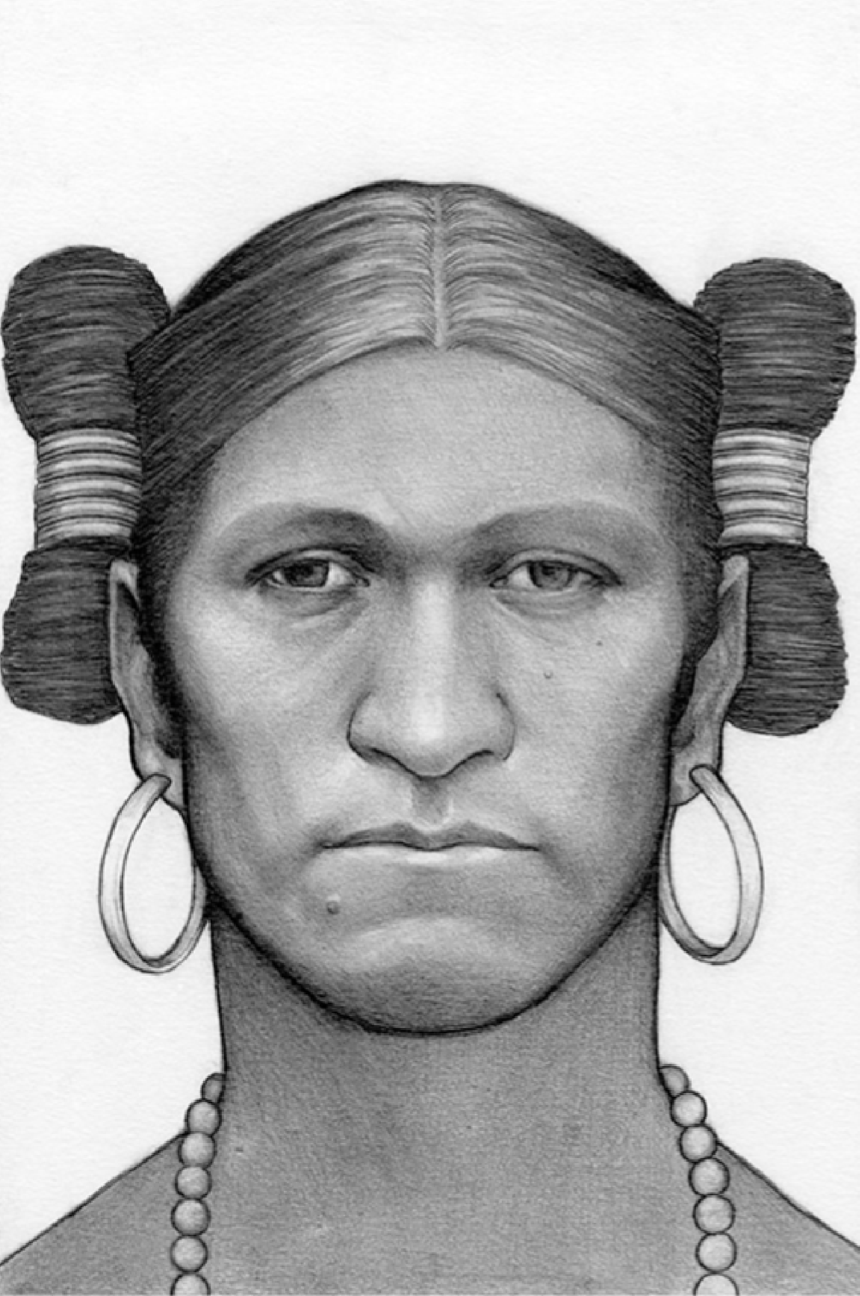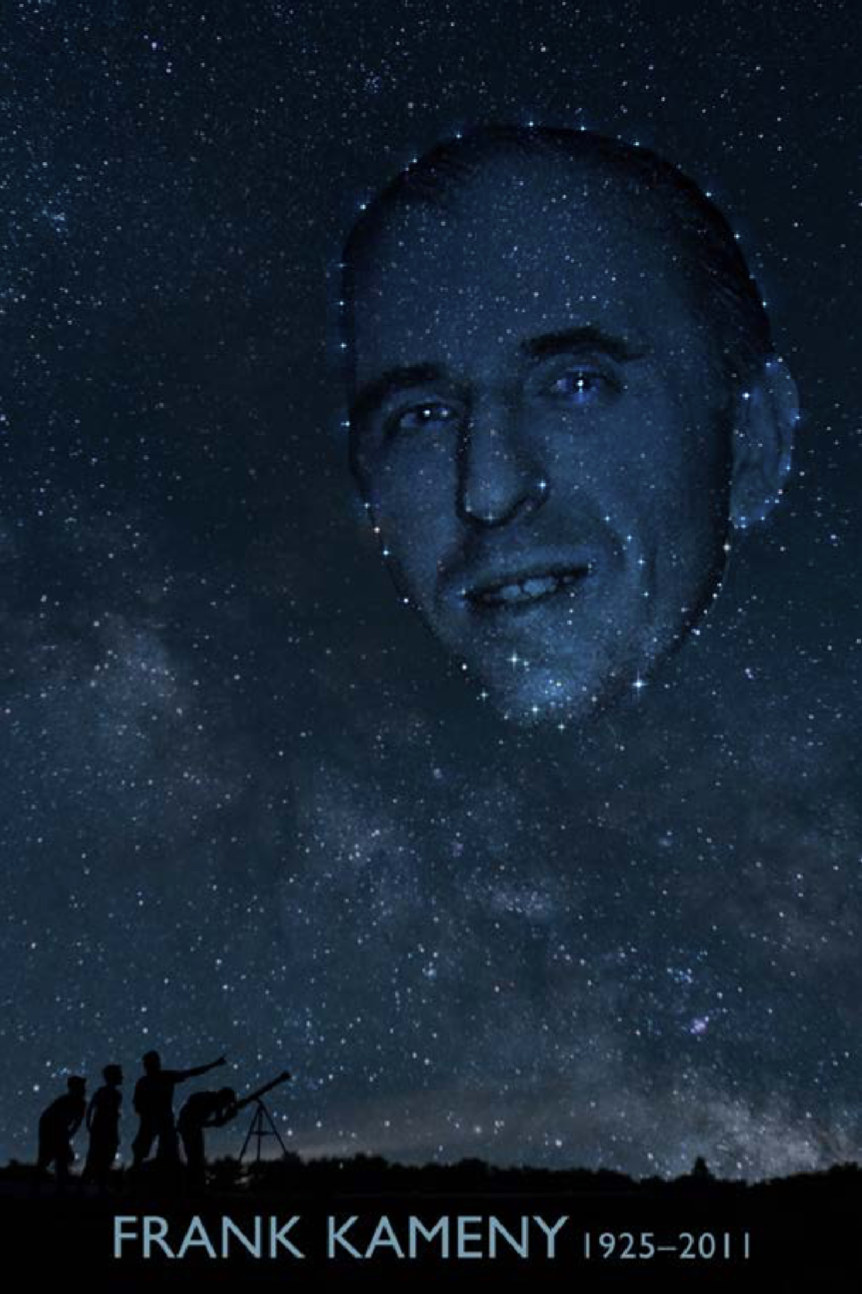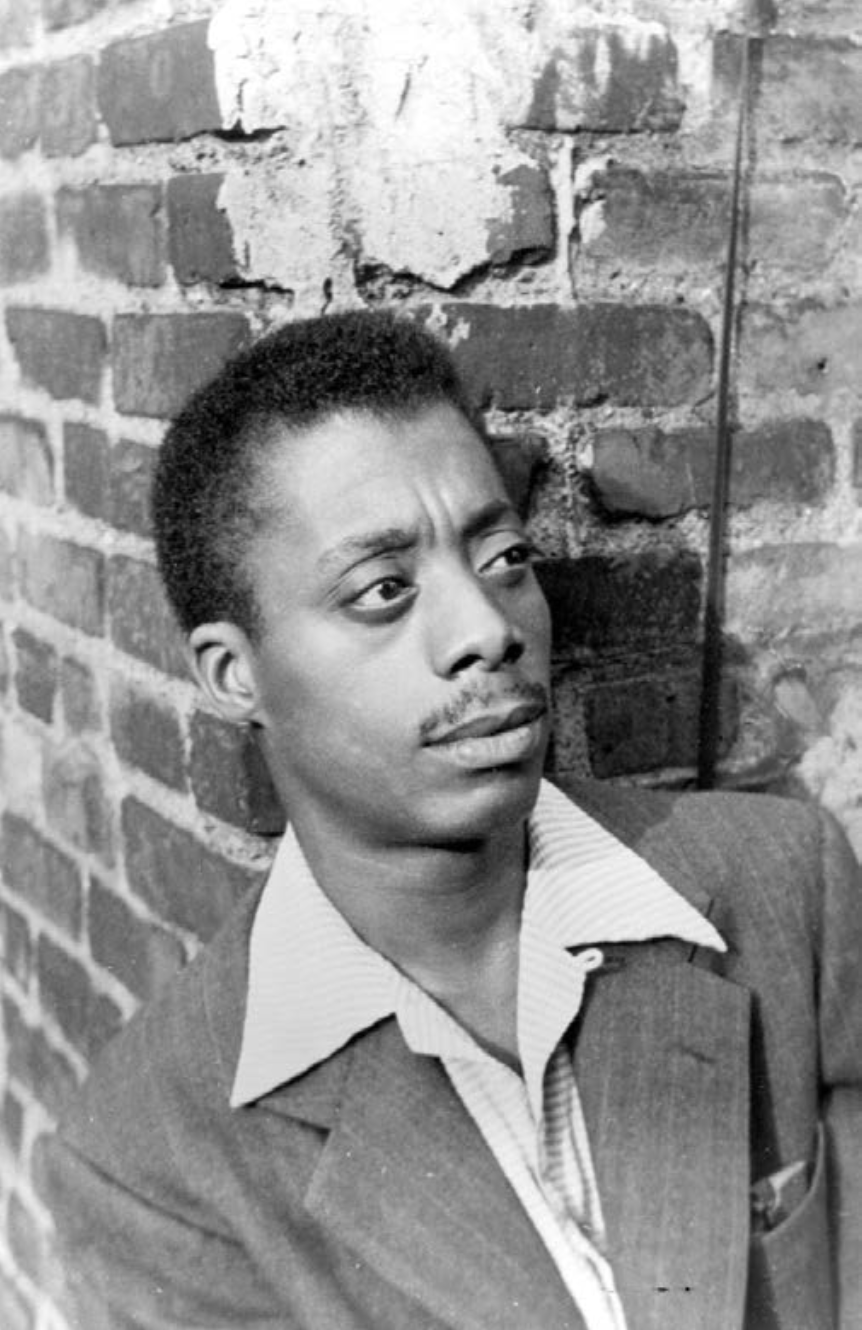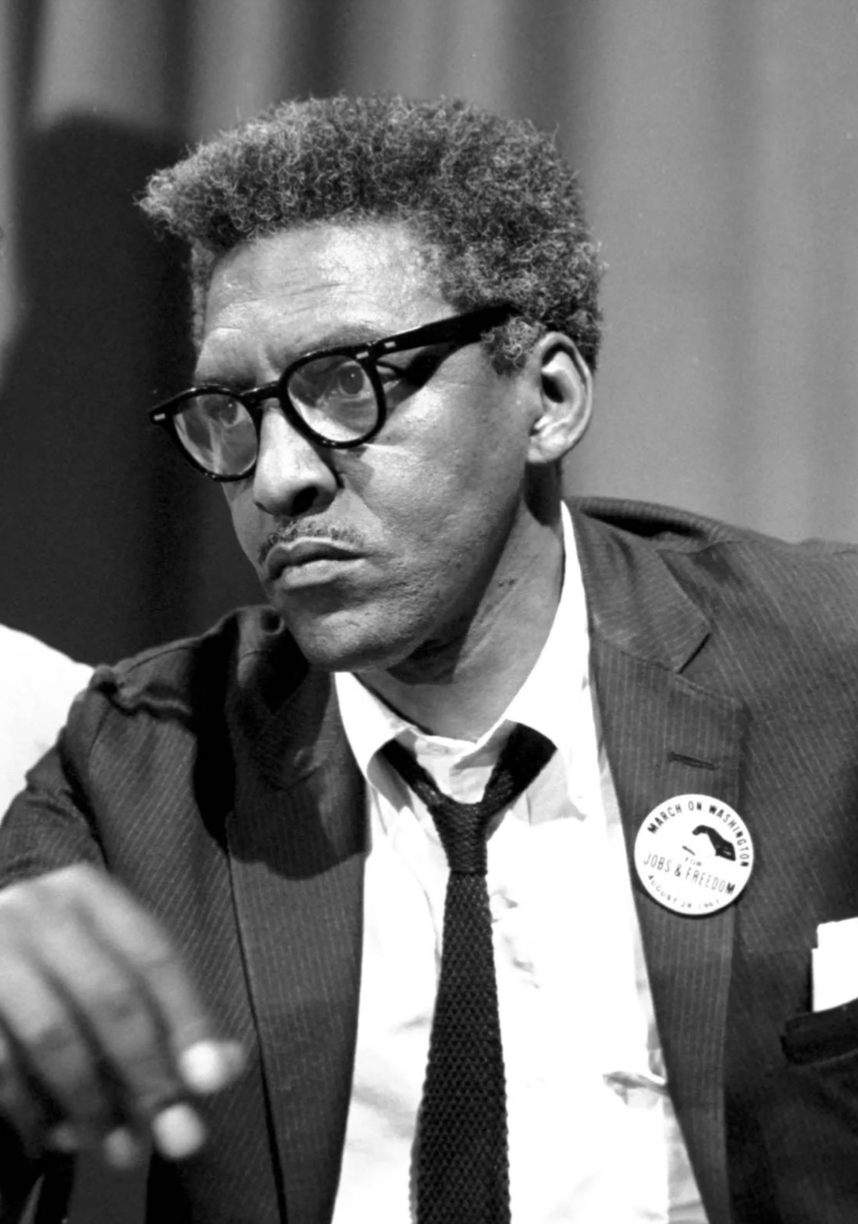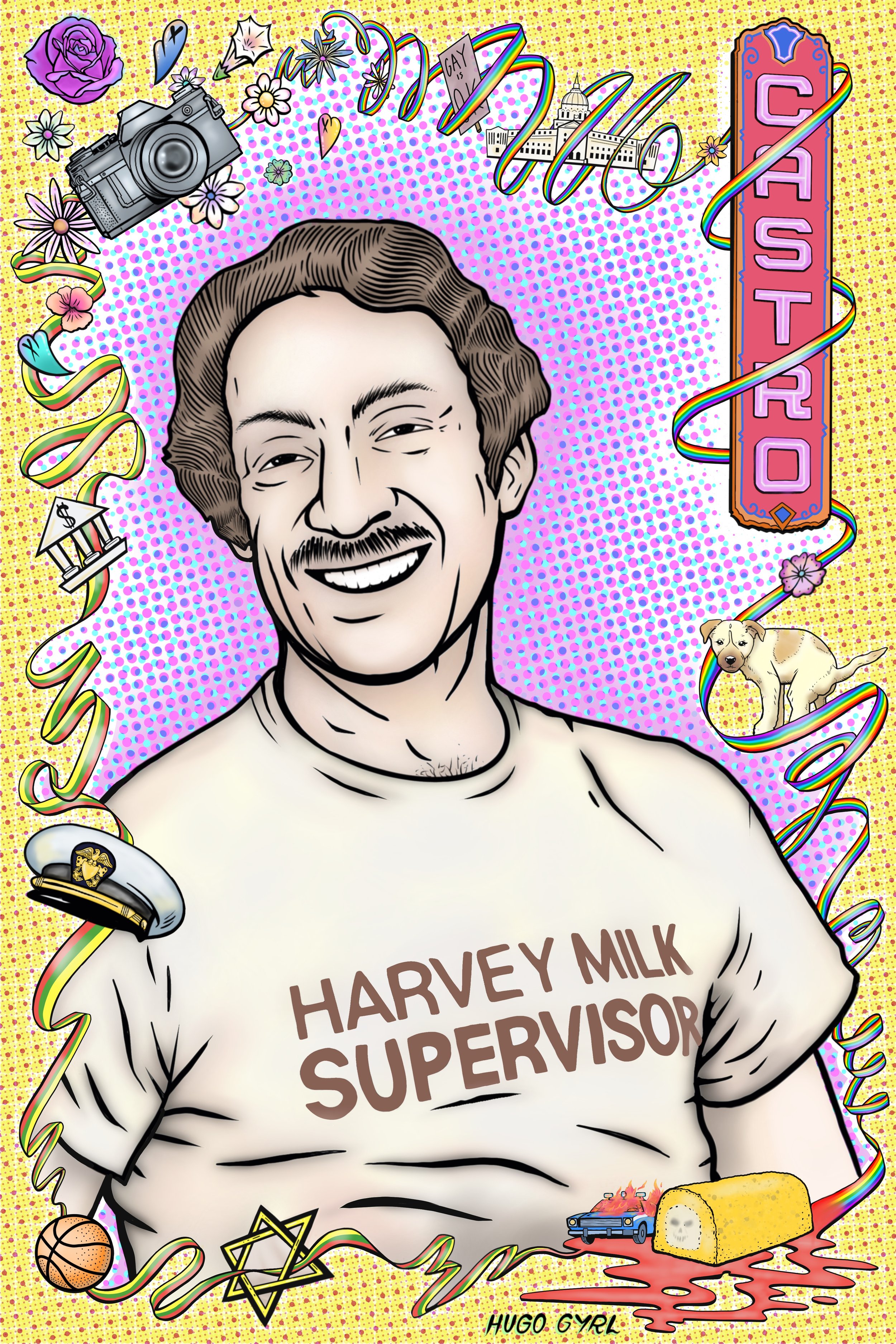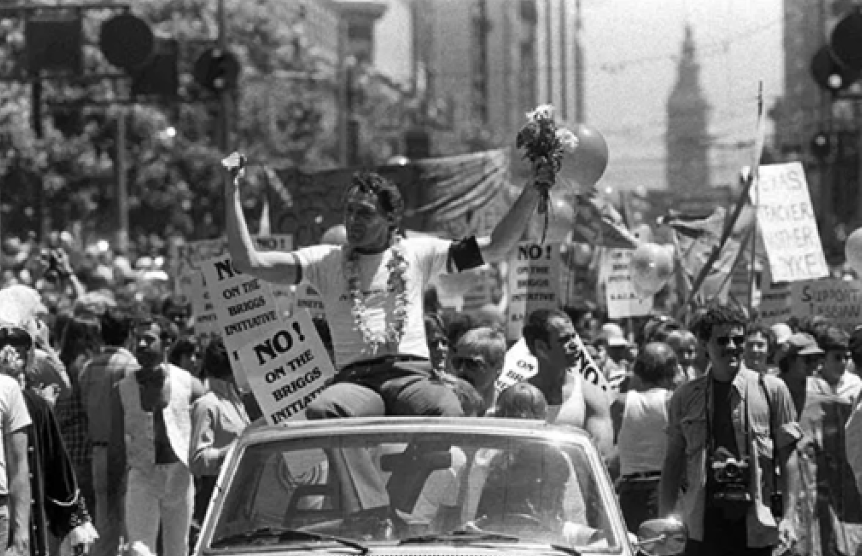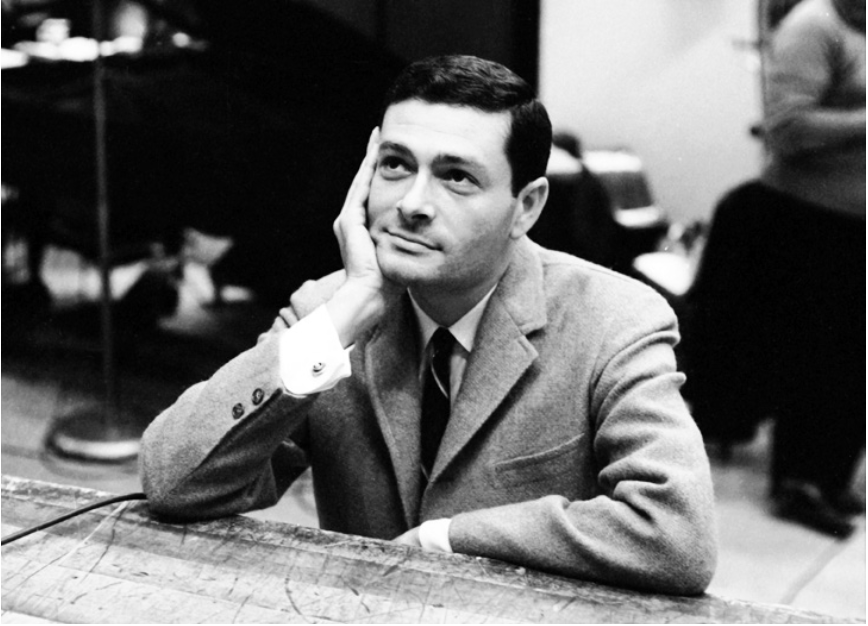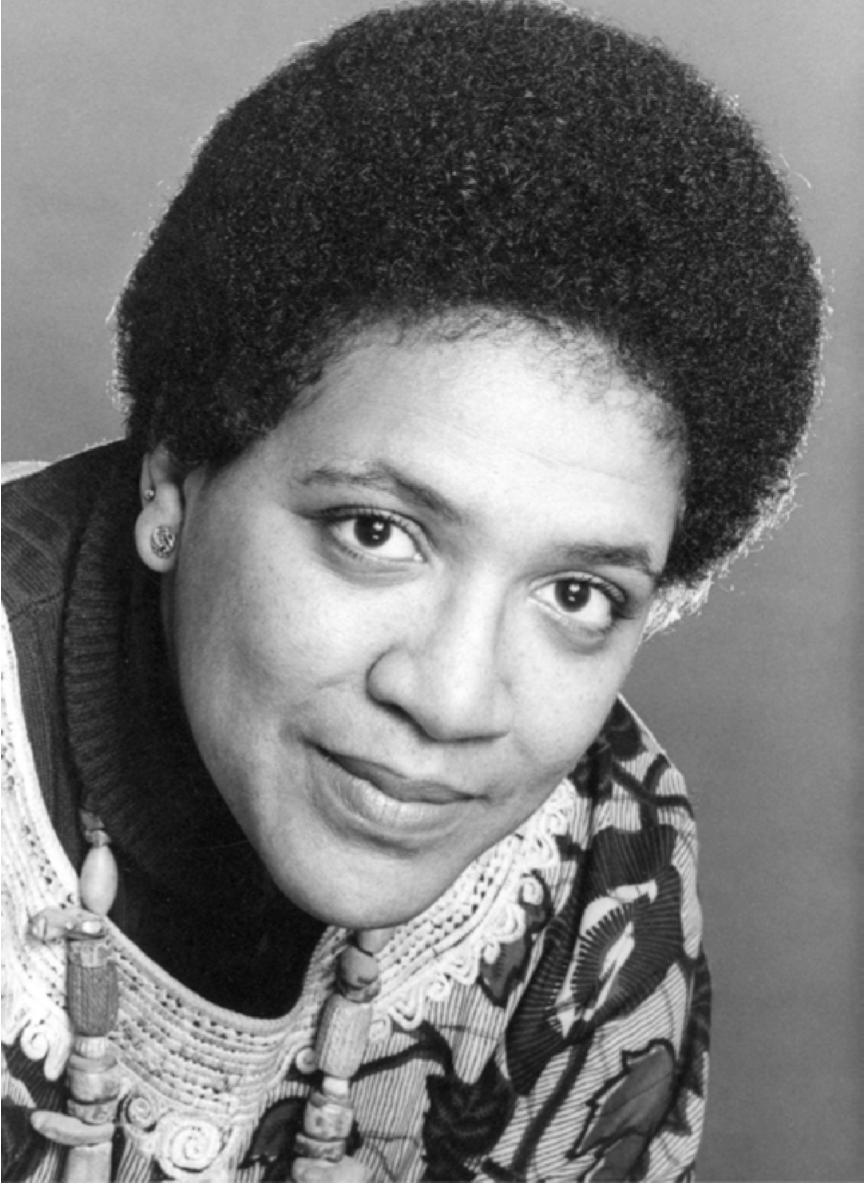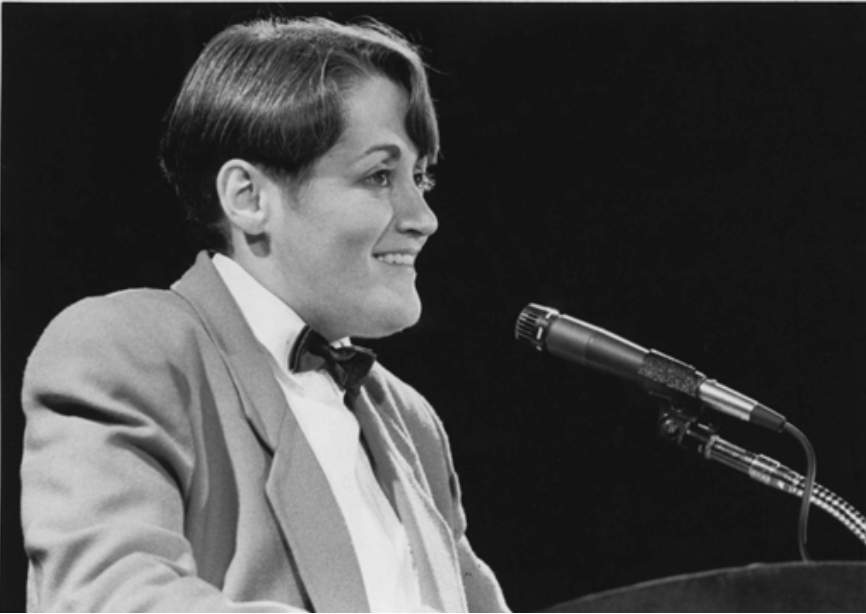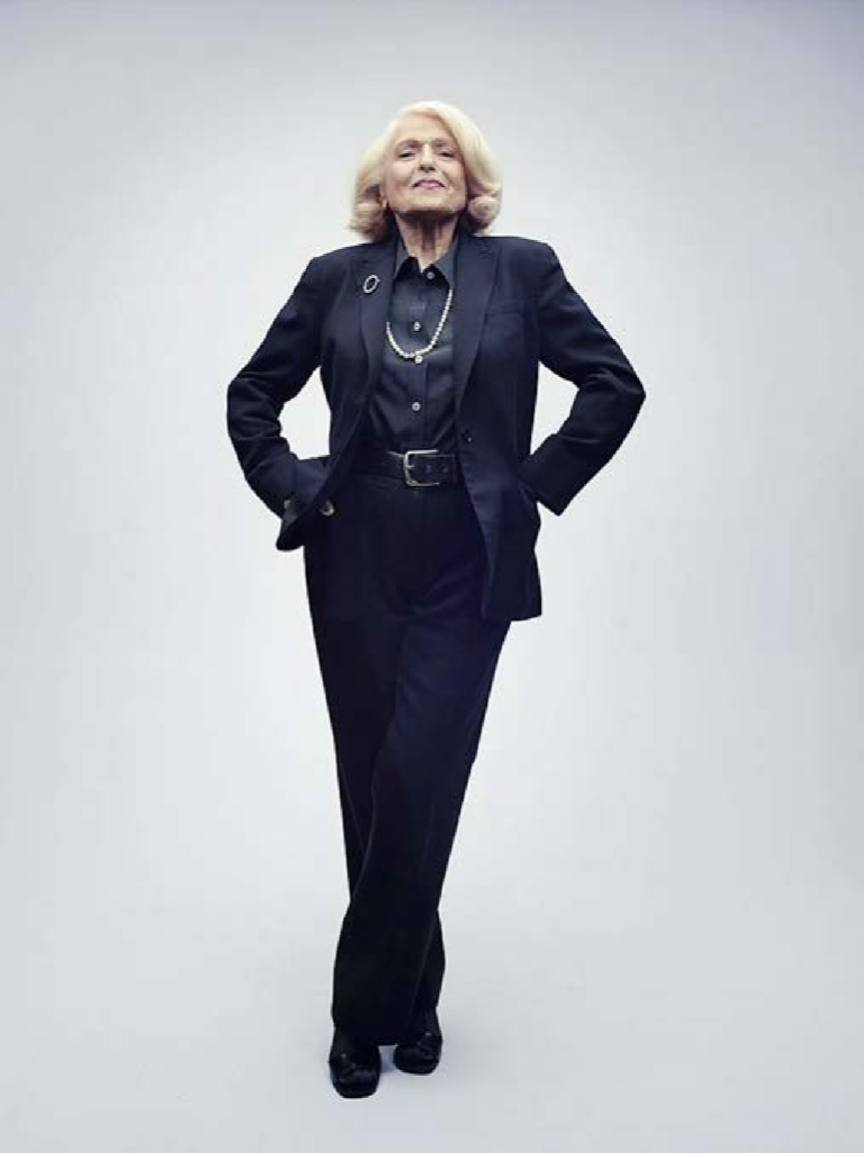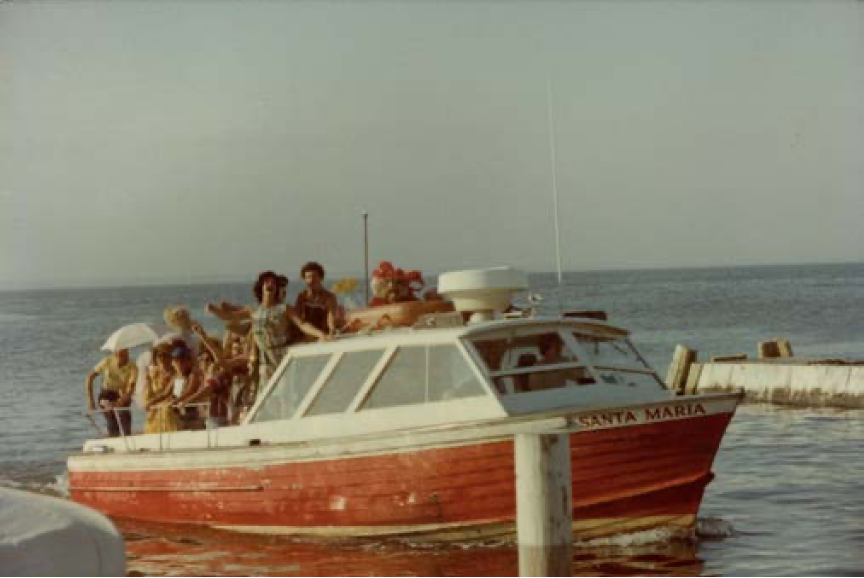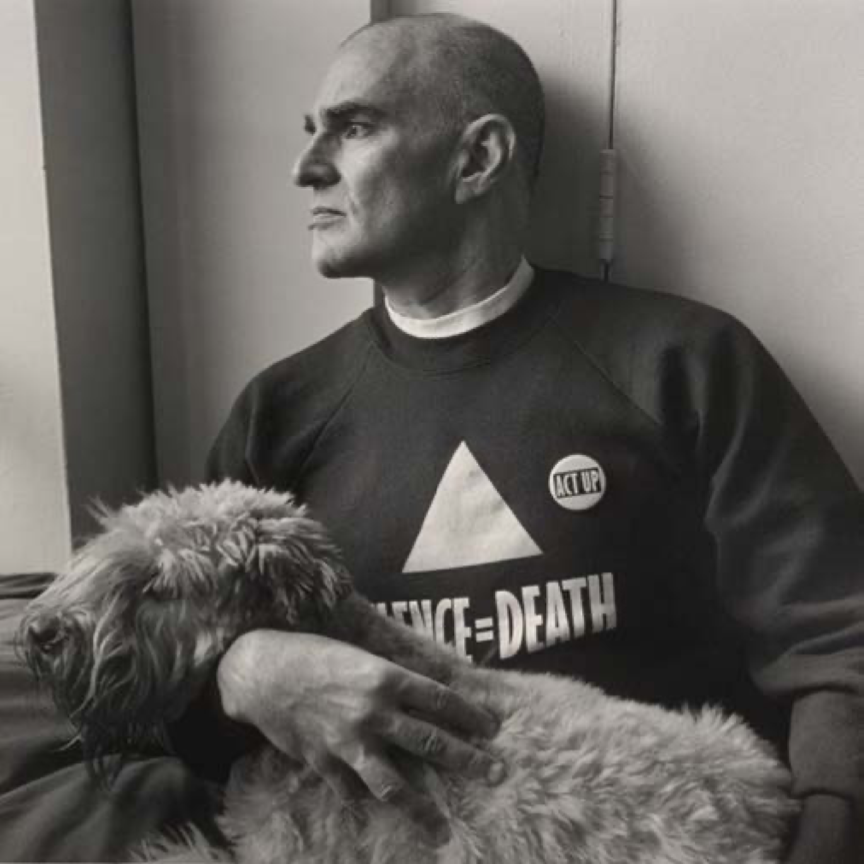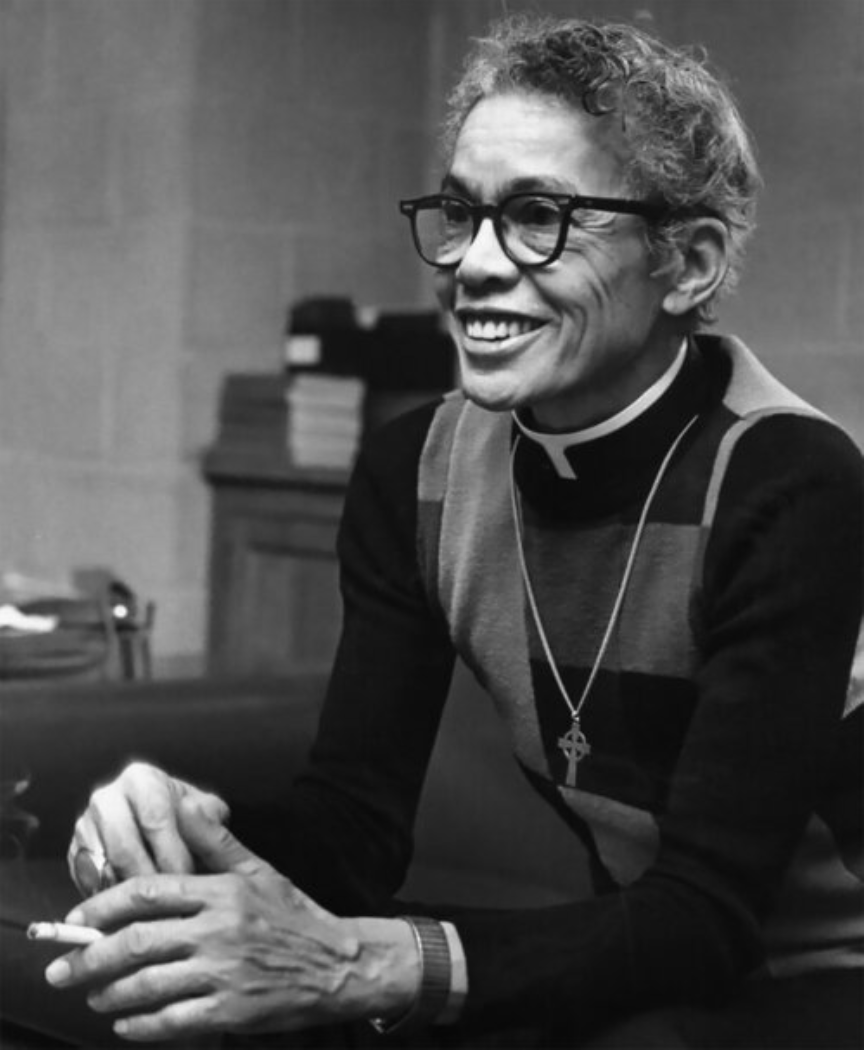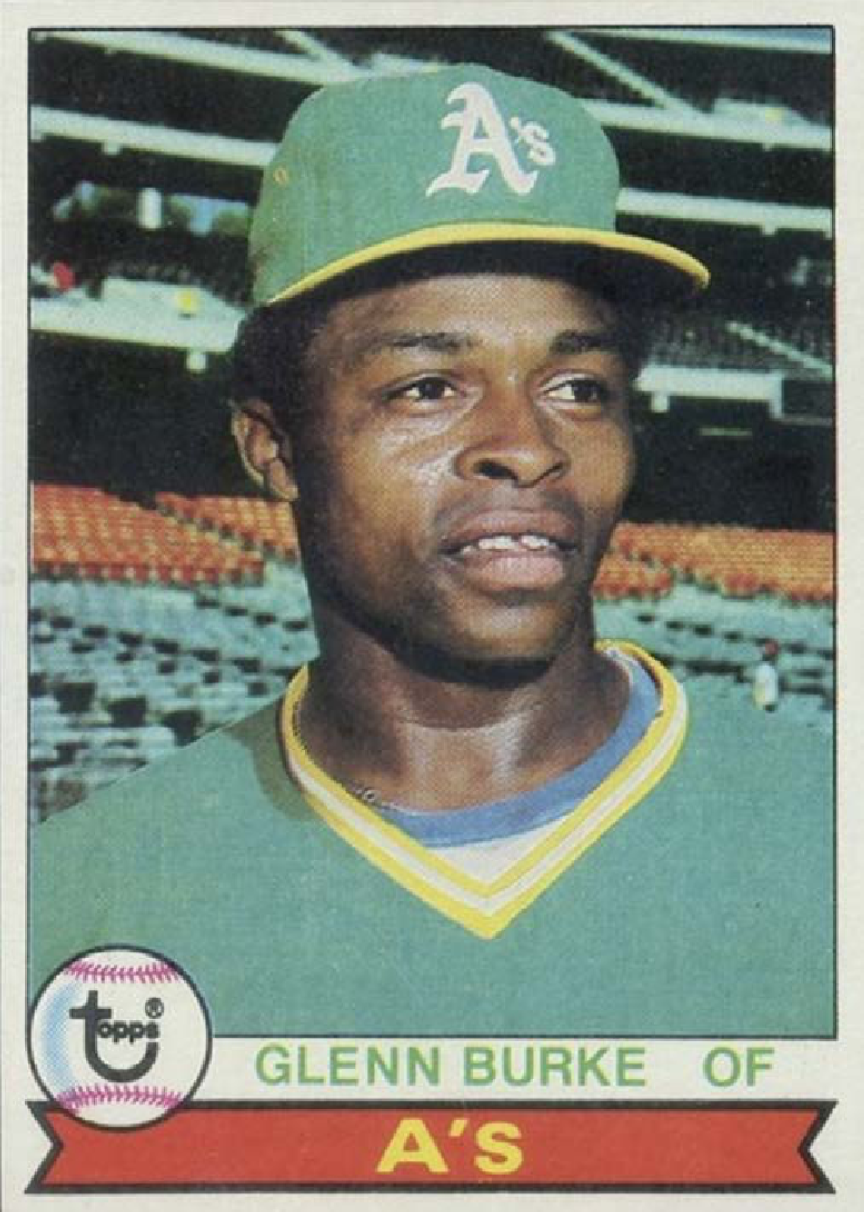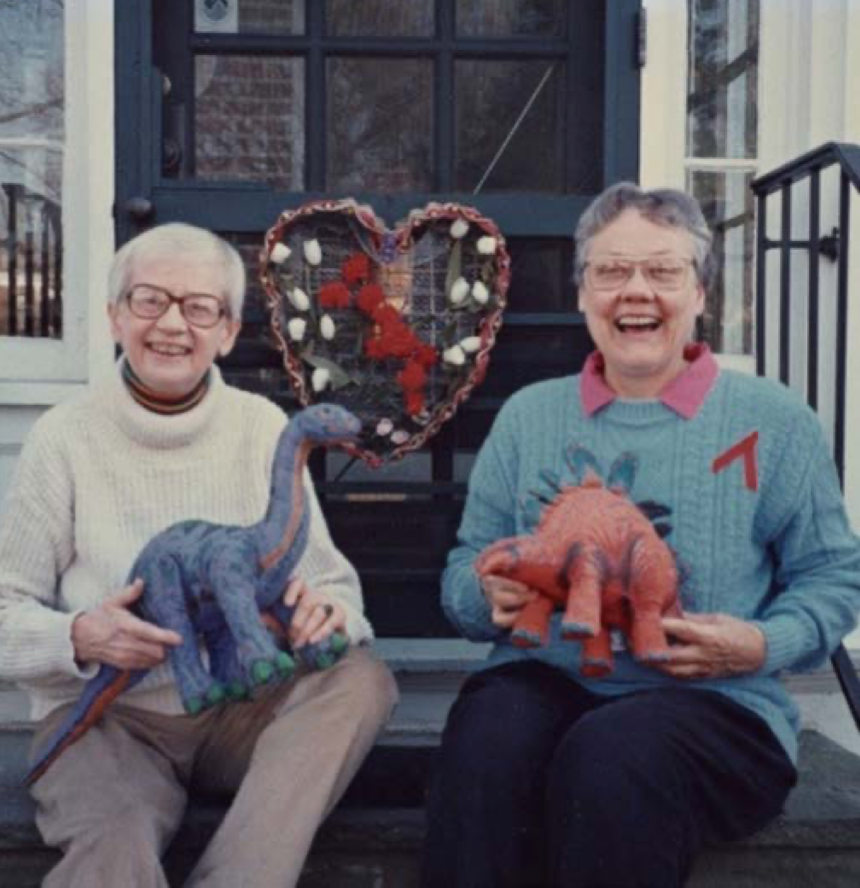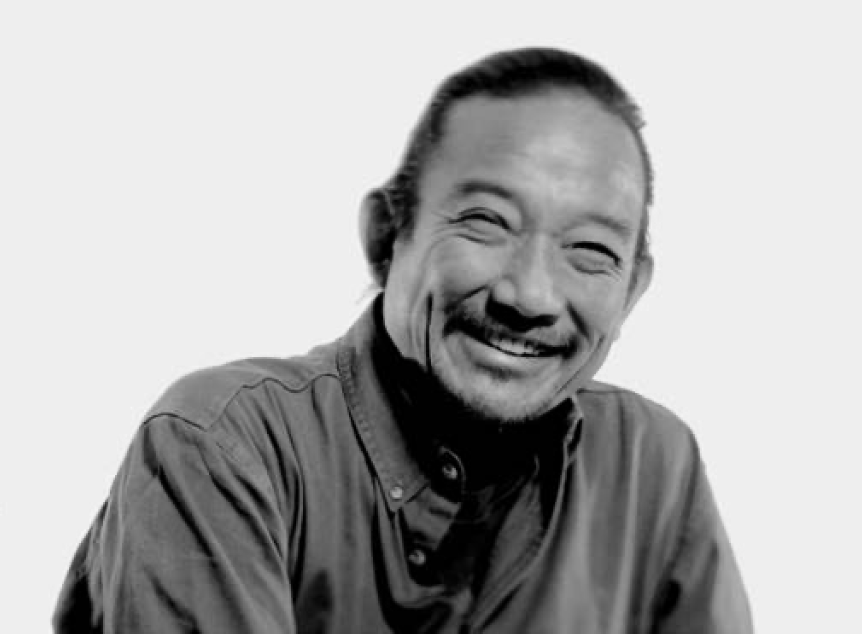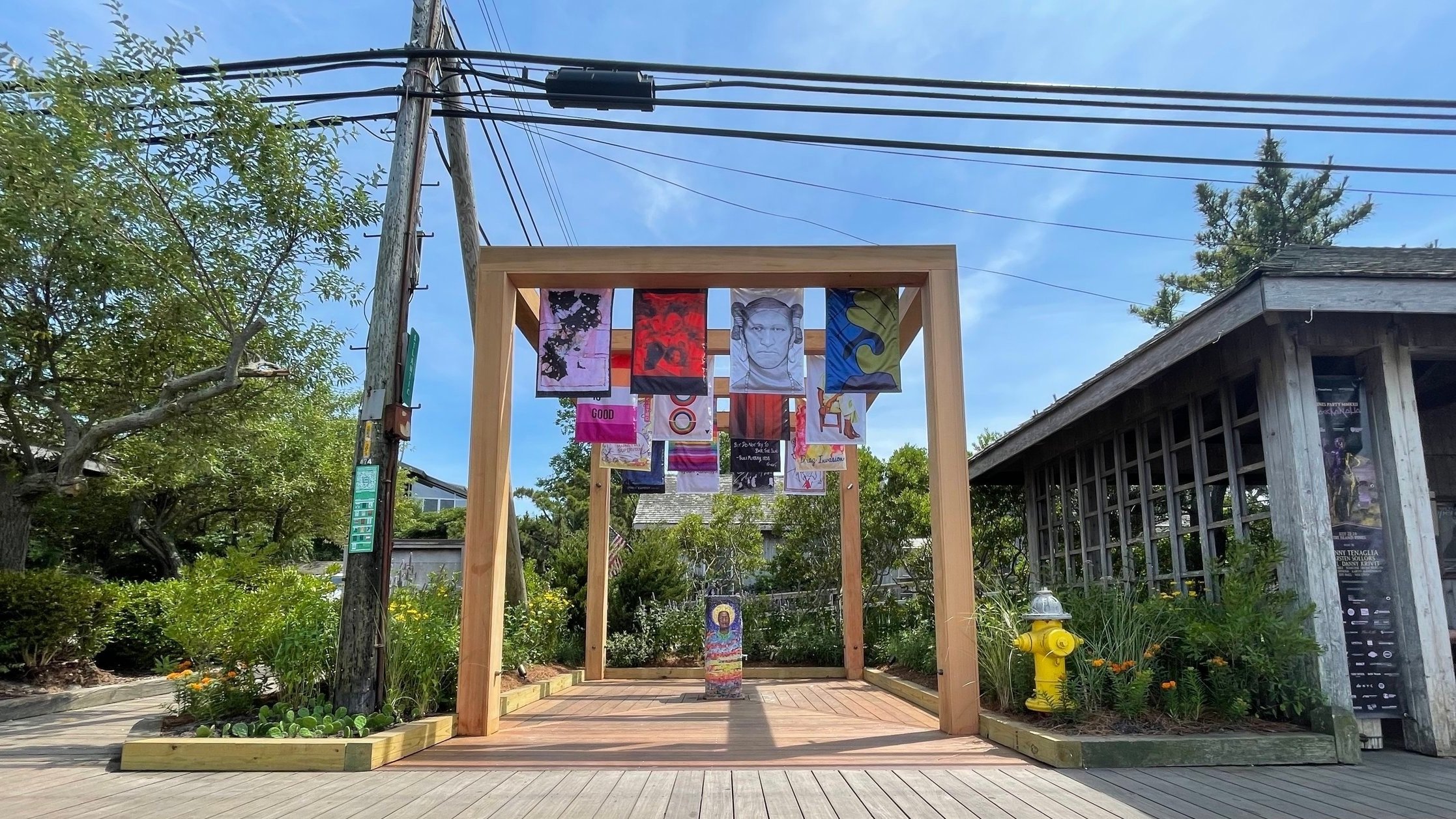
Trailblazer &
Artist Biographies
2022 Cycle
Jump to section:
TM Davy x Marsha P. Johnson & Sylvia Rivera
Carlos Motta x We’wha
Carlos Pisco x Frank Kameny
DonChristian Jones x James Baldwin
Eric Lesh x Bayard Rustin
Hugo Gyrl x Harvey Milk
Joe McShea & Edgar Mosa x Jerry Herman
Joseph Conforti x Supreme Court Plaintiffs
Lyle Ashton Harris x Audre Lorde
Martine Gutierrez x Carmen Vazquez
Nicole Eisenman x Edie Windsor
Raul De Nieves x Invasion Drag Queens
Richard Des Jardin x Larry Kramer
Ryan Ponder McNamara x Pauli Murray
Tiffany Malakooti x Glenn Burke
Victor Jeffreys II. x Barbara Gittings & Kay Lahusen
Wolfgang Tillmans x Kiyoshi Kuromiya
Trailblazers
Marsha P. Johnson & Sylvia Rivera
Artist
TM Davy
Marsha P. Johnson
(1945-1992)
“I was no one, nobody, from Nowheresville until I became a drag queen. That’s what made me in New York, that’s what made me in New Jersey, that’s what made me in the world.” - Marsha P. Johnson
Marsha Johnson was a Black transgender woman and revolutionary LGBTQ+ rights activist.
Marsha moved to New York City from New Jersey in the 1960’s with only $15 and a bag of clothes. It was then she adopted the full name “Marsha P. Johnson” and began almost exclusively dressing in women’s clothes. The “P” stood for “Pay it No Mind.” This was her life motto and she used it whenever anyone questioned her gender or sexuality. Her forthright nature and enduring strength led her to speak out against injustices.
It was difficult for Marsha to find work. She realized that the fastest way to make money was to “hustle.” This meant working as a sex worker, which was incredibly dangerous; she was even shot, once. Marsha spent most of her life without a permanent home. She slept in hotel rooms, restaurants, and movie theaters. She sometimes lived with friends. Even when she found work waiting tables or performing in drag shows, she still made most of her money as a sex worker.
Not long after arriving in New York, 17-year-old Marsha met 11-year-old Sylvia Rivera, a Puerto Rican transgender girl who was also new to New York. The two became instant friends.
On June 28, 1969, at the Stonewall Inn on Christopher Street (the hub of the NYC gay community in the 1960s), things turned violent after a few LGBTQ+ people were arrested on questionable charges, handcuffed, and very publicly forced into police cars on the streets of NYC. The community was fed up with being targeted by the police and seeing these public arrests incited rioting that lasted several days. These events have been collectively described as a “riot,” a “rebellion,” a “protest,” and an “uprising.” Many eyewitnesses have identified Marsha as one of the main instigators of the uprising.
As the broader gay and lesbian movement shifted toward leadership from white cisgender men and women, transgender people of color were swept to the outskirts of the movement. Despite this, following the events at Stonewall, Marsha and Sylvia co-founded the Street Transvestite Action Revolutionaries (STAR) and they became fixtures in the community, especially in their commitment to helping homeless transgender youth. STAR provided services — including shelter — to homeless LGBTQ+ people in New York City, Chicago, California, and England for a few years in the early 1970s, but eventually disbanded.
Marsha’s whole life seemed to be a balance between popularity and exclusion. Throughout Greenwich Village, she was known as “Saint Marsha.” Locals admired her ability to truly be herself. Marsha had a reputation for being generous and kind. She gave people clothes and food, even though she had little of her own. Despite her popularity, Marsha also lived a life of poverty and danger. She was arrested over 100 times. In 1990, Marsha was diagnosed with AIDS.
Sylvia Rivera
(1951-2002)
Sylvia Rivera was a Latina drag queen, community worker, and gay liberation and transgender rights, activist. Rivera was born and raised in New York City. She was abandoned by her father and became an orphan at age three after her mother committed suicide. Rivera began living on the streets at age ten and was forced to work as a child prostitute. She was taken in by the local community of drag queens, who gave her the name Sylvia. Based in New York City for most of her life, Rivera fought for the inclusion of transgender people, drag queens, homeless queer youth, and others that were excluded from the increasingly mainstream gay rights movement.
In 1963, Rivera met Marsha P. Johnson and it changed her life. Rivera said of Johnson “she was like a mother to me.” Accounts differ on whether Rivera was present at the Stonewall riots in 1969. However, Rivera considered Stonewall to be “the turning point.” A year following the rebellion, Rivera joined the new Gay Activists Alliance and began working furiously to pass a gay rights bill in New York City. She was even arrested for climbing the walls of City Hall in a dress and high heels to crash a closed-door meeting on the bill. Yet, within a few years, the GAA had eliminated drag and “transvestite” concerns from its civil rights agenda. Drag rights were also dropped from the proposed city gay rights bill to make it more acceptable.
In 1970, Rivera and Johnson co-founded Street Transvestite Action Revolutionaries (STAR). The group addressed issues affecting the transgender community in New York City and ran STAR House, which provided housing for transgender people. Rivera said that she and Johnson “decided it was time to help each other and help our other kids. We fed people and clothed people. We kept the building going. We went out and hustled the streets. We paid the rent.”
The first New York City Gay Pride parades often discriminated against drag queens and transgender people. In 1973, Rivera participated in the Christopher Street Liberation Day parade but was not allowed to speak, despite her extensive advocacy. At the rally in Washington Square Park, Rivera grabbed the microphone anyway and delivered a fiery speech, scolding attendees “If it wasn’t for the drag queen, there would be no gay liberation movement. We’re the front-liners.” She was booed off stage.
Grappling with some health issues and disenchanted with the gay rights movement, Rivera took a break from activism and life in New York City for a number of years. She returned in 1992 after the death of Johnson and again became involved with advocacy for the transgender community. She lived to see the ’90s protest group Transsexual Menace and, later, the New York Association for Gender Rights Advocacy (NYAGRA). Sylvia was herself frequently homeless. In 1997, she started Transy House, modeled after STAR House, in Brooklyn. Rivera also fought for the Sexual Orientation Non-Discrimination Act in New York, which finally passed in 2002.
Later in her life, Rivera declared “Before I die, I will see our community given the respect we deserve. I’ll be damned if I’m going to my grave without having the respect this community deserves. I want to go wherever I go with that in my soul and peacefully say I’ve finally overcome.”
Sylvia passed away in February 2002 at the age of 50 due to complications from liver cancer. Even on her deathbed, she continued to work with the Empire State Pride Agenda, a mainstream LGBTQ+ rights organization, to promote the interests of transgender people.
The Sylvia Rivera Law Project (SRLP), a collective organization that works to guarantee that all people are free to self-determine their gender identity and expression, regardless of income or race, and without facing harassment, discrimination, or violence, was named after her.
A trailblazer in her own right, Sylvia Rivera is recognized as a tireless advocate for all those who were marginalized as the “gay rights” movement mainstreamed.
Artist Biography
TM Davy lives and works in Brooklyn and Fire Island Pines, NY. He was educated at The School of Visu- al Arts (BFA). Davy has had solo exhibitions at Van Doren Waxter, New York (2019), Galerie Thomas Fuchs in Stuttgart, Germany (2021, 2018), Exile in Berlin, Germany (2012), and 11R in New York, NY (2014, 2017). He is newly represented by Company Gallery in New York with exhibitions forthcom- ing. Davy’s work has been included in numerous group exhibitions, including Nobody Promised You Tomorrow: Art 50 Years AZer Stonewall at the Brooklyn Museum, NY (2019); Them at Perrotin, NY; Fire at Company Gallery, New York (2019); The Lure of the Dark: Contemporary Painters Conjure the Night at MASS MoCA, North Adams, MA (2018); Con Amore at Aarhus Kunstmuseum, Den- mark (2011); No Soul for Sale, curated by Maurizio CaOelan and Cecilia Alemani, at Tate Modern, UK (2010); X IniJaJve, New York (2009); and Nudes at Galeria Fortes Vilaça, São Paulo (2009). Re- views and articles on Davy’s work have been published in The New York Times, Areorum, Art in America, and The Village Voice, among others.
Trailblazer
We’wha
Artist
Carlos Motta
We’wha
(1849-1896)
Born in 1849 to the Zuni nation, We’wha was one of the most famous Zuni Lhamana, meaning Two-Spirit.
As a Lhamana, We’wha took on both male and female tasks as a Zuni cultural ambassador and pottery and textile artist. Trained in traditional crafts, We’wha’s textiles and pottery were exquisite, while simultaneously they performed masculine tribal roles like hunting and judicial functions.
A spiritual leader as well, We’wha endeavored to preserve the history, traditions, and knowledge of the Zuni people. We’wha moved among all members of the Zuni community. They not only accepted We’wha’s gender identity, but revered We’wha’s gift for spiritual leadership.
Orphaned as an infant (possibly the result of a smallpox epidemic), We’wha and their brother were adopted by a paternal aunt. We’wha’s adopted family was wealthy and influential among the Zuni. Their position gave We’wha opportunities to gain special ceremonial knowledge and take part in revered cultural rituals.
Though born a male-bodied person, community members recognized that We’wha demonstrated traits associated with the lhamana at an early age. We’wha received some instruction specific to men, but largely trained under their female relatives, learning critical skills for domestic tasks. We’wha trained for years to master the elements of the pottery, many of which held ceremonial importance, and also became a skilled weaver (usually a male role), learning different looms to make blankets, belts, and sashes. We’wha became known for their talent as a craftsperson, during a period in which Pueblo textiles, particularly those in the distinctive Zuni style, flourished. We’wha was among the first Zuni to sell their pottery and textiles, helping to bolster Native Ameri- can arts more widely.
In 1879, the U.S. government’s newly created Bureau of Ethnology sent an expedition to collect artifacts and record the customs of the Zuni people. Anthropologist Matilda Coxe Stevenson, the wife of expedition leader James Stevenson, was immediately taken with We’wha. Stevenson was impressed by We’wha’s extensive knowledge of Zuni history and culture, describing them as “the most intelligent person in the pueblo.”
Stevenson visited the Zuni numerous times between 1879 and 1897 and formed a deep friendship with We’wha. In late 1885, the Stevensons brought We’wha back with them to Washington, D.C. for six months. Like other Indian delegations to the nation’s capital, the Stevensons intended the visit to foster cultural exchange and generate interest in further anthropological research. Everyone in Washington believed We’wha to be a (cisgender) woman, so the visit garnered a great deal of attention because women rarely participated in delegations. We’wha mingled with Washington’s high society, even calling on President Grover Cleveland at the White House. Newspapers covered We’wha’s activities closely, reporting with great interest on the “Indian princess.”
We’wha also assisted Stevenson with ethnographic research for the Smithsonian National Museum – they explained the significance of Zuni artifacts, posed for photographs to document Zuni weaving, and donated crafts to the museum’s collections.
We’wha may have intended to raise awareness about the Zuni in an effort to secure government assistance against squatters and other encroachers on their land. But name recognition did not stop the U.S. Office of Indian Affairs from extending its policy of assimilation to the Zuni and other Pueblo Indians in the years following We’wha’s return. Such policies furthered the dismantling of tribal culture – including pressure to abandon the recognition of lhamana individuals – and the absorption of Native Americans into Anglo society.
We’wha crossed over in 1896, at the age of 49, as a result of heart disease. We’wha’s early death was considered a “calamity” among the Zuni. The two-spirit We’wha left a profound legacy as a ceremonial leader, cultural ambassador, and artist who worked to preserve the Zuni way of life.
Artist Biography
Carlos Motta is a multi-disciplinary artist whose practice documents the social conditions
and political struggles of sexual, gender, and ethnic minority communities, challenging normative discourses through visibility and self-representation. His upcoming solo exhibitions include the Wexner Center for the Arts, Columbus, Ohio (2022) and Museo de Arte Moderno de Bogotá (MAMBO) (2023). He participated in the 11th Berlin Biennale (2020) and Art of the Real, Film at Lincoln Center (2021). His work is in the permanent collection of New York’s Metropolitan Museum of Art, Museum of Modern Art, and Guggenheim Museum. Motta won the Pinchuk Art Centre’s Future Generation Art Prize in 2014 and was awarded a Guggenheim Fellowship in 2008. He is an associate professor of Interdisciplinary Practice, Fine Arts, at Pratt Institute, in Brooklyn. Carlos has been coming to Fire Island Pines since 1997.
Trailblazer
Frank Kameny
Artist
Carlos Pisco
Frank Kameny
(1925-2011)
Frank Kameny was born in New York City. He entered Queens College, served in the U.S. Army in the Netherlands and Germany during World War II, and earned his doctorate from Harvard in 1956. He was hired as an astronomer the next year by the U.S. Army Map Service but lasted only five months when the government learned he had been arrested by the morals squad in Lafayette Park, across from the White House, which was known as a gay cruising ground. Kameny appealed his firing through the judicial system, losing twice before seeking review from the United States Supreme Court, which turned down his petition. Although unsuccessful, Kameny brought the first known civil rights claim based on sexual orientation pursued in a federal court in the United States.
Kameny spent the rest of his life fiercely advocating for gay rights. In 1963, Kameny and the Mattachine Society launched a campaign to overturn Washington, D.C. sodomy laws; he personally drafted a bill that finally passed in 1993. He also worked to remove the classification of homosexuality as a mental disorder from the American Psychiatric Association’s Diagnostic and Statistical Manual of Mental Disorders. Unlike other homosexual activists at the time, Kameny rejected the idea that homosexuality was inferior to heterosexuality. Kameny further argued that homosexuality can be a social good: “I take the stand that not only is homosexuality, whether by inclination or overt act, not immoral, but that homosexual acts engaged in by consenting adults are moral, in a positive and real sense, and are right, good and desirable, both for the individual participants and for the society in which they live. He eventually coined the slogan “Gay is Good” after listening to Stokely Carmichael chant “black is beautiful” in 1968.
In 1971, Kameny became the first openly gay candidate for the United States Congress when he ran in the District of Columbia’s first election for a non-voting Congressional delegate. Following his defeat, Kameny and his campaign organization created the Gay and Lesbian Alliance of Washington, D.C., an organization created to advocate for equal rights.
As for his firing, Kameny lived long enough to receive and accept an apology from John Berry, the director of the United States Office of Personnel Management, successor to the Civil Service Commission: “He helped make it possible for countless of patriotic Americans to hold security clearances and high government positions, including me.”
Kameny passed away on October 11, 2011.
Artist Biography
Carlos Pisco was born in Rio de Janeiro, Brazil, he lives in NYC and works as faculty at the School of Visual Arts and as a digital product designer. A passion for drawing threads through Pisco’s works focused on nature, architecture, and the male body. In 2011, Carlos founded the Pines Nude Drawing group to create a venue for the community artists to practice life drawings during the summer in the beautiful settings of the Pines.
Trailblazer
James Baldwin
Artist
DonChristian Jones
James Baldwin
(1924-1987)
James Baldwin was one of the most eloquent communicators of the Black and queer experience in America. Baldwin rose to acclaim as the voice of the Civil Rights Movement; yet, he was unapologetically Black and gay.
Baldwin was born into extreme poverty in Harlem, New York on August 2, 1924. The grandson of an enslaved person, he was the oldest of nine siblings. He was raised by his mother and stepfather, a preacher with whom he had a troubled relationship for most of his life. Nevertheless, Baldwin had a thirst for learning and found refuge in libraries very early. While in fourth grade, he was reading the works of Fyodor Dostoyevsky, Harriet Beecher Stowe, and Charles Dickens.
Baldwin’s loving mother supported his journey and approved of the three teachers who shaped his curiosity: Orilla Miller, a white teacher, who introduced Baldwin to cinema and plays; Herman W. Porter, Baldwin’s Harvard-educated junior high school math teacher; and acclaimed Harlem Renaissance poet Countee Cullen, who taught Baldwin French and English.
At 14, Baldwin discovered his oratorical gift and became a popular Pentecostal preacher in Harlem. However, while at the pulpit preaching doctrine, Baldwin became aware of who he could become; he had secretly fallen in love with a boy. Feeling like an outsider, Baldwin struggled to be Black and poor and now “homosexual” in America. Struggling to maintain his connection to God, he denounced religion and considered it a sham at 17.
Baldwin attended the prestigious and predominantly white De Witt Clinton High School in the Bronx, where he wrote for his high school newspaper, The Magpie. During this time, Balwin was introduced to Beauford Delany. Delany, an artist, was perhaps the most influential person in Baldwin’s life. He introduced the young man to music, took him to galleries, taught Baldwin to think like an artist, and showed him that it was possible to make a living at it.
After high school graduation, Baldwin worked for the US Army and the post office. However, determined to be a writer, Baldwin practiced self-study while engaging in literary apprenticeships. At 18, Baldwin was hired as a waiter at the popular dinner club/nightclub Calypso, where he began friendships with the restaurant’s community of Bohemians, including Marlon Brando, Eartha Kitt, and the restaurant owner Connie Wiliams.
Following the death of Eugene Worth, who had declared his love for Baldwin, but to whom Baldwin was unable to reveal that he felt the same way, Baldwin’s writing began receiving attention; he received published commissions in such national periodicals as The Nation, Partisan Review, and Commentary. Yet, Baldwin felt like a statistic in America because of the plight of living through extreme racism and human cruelty, watching his friends and family suffer and die in a world where rejection, failure, and humiliation were the norm.
In 1948, Baldwin won the Rosenwald Fellowship and used the money to pursue his dream to leave America for Europe. Baldwin chose Paris, which allowed him to reflect and write freely about America’s Black experience and identity through his unique gaze.
Baldwin first novel, Go Tell It on the Mountain, was a semi-autobiographical tale dealing with family relationships, organized religion, and homosexuality. He then wrote Giovanni’s Room, a game-changing novel that tackled the issues of homosexuality, which at the time was taboo. His next book, The Fire Next Time, addressed the troubled relationship between Christianity and the Black Muslim community during the Civil Rights Movement. The book served as an intense portrait, placing a notable spotlight on the prejudice and racism that infested and stained America. Baldwin concluded that racism is not about biology. Instead, it is derived from the structure of power.
Baldwin’s other works included Giovanni’s Room, Another Country, The Amen Corner, Just Above My Head, Notes of a Native Son, and The Fire Next Time.
Baldwin’s notoriety gave him massive attention and landed him on the cover of TIME Magazine. Consequently, Baldwin became one of the most compelling and recognized twentieth-century scholarly literary voices in popular culture. James Baldwin’s inspirational work remains a seminal treatise on racism and identity.
Though he returned to New York on a number of occasions, Baldwin spent most of his later years in France. He died on December 1, 1987, in France.
Artist Biography
DonChristian Jones is a multimedia artist and musician. Their work spans painting, musical albums, film, and performance installation. Don has shown and performed in spaces such as The Whitney Museum, MoMA PS1, New Museum, Brooklyn Museum, and The Shed. Much of their work today is informed by their time spent painting murals on Rikers Island with incarcerated youth, and teaching at Harvey Milk HS/ Hetrick-Martin Institute. In 2020, Don founded Public Assistants Inc., a mutual aid network and community design lab headquartered in Brooklyn.
Trailblazer
Bayard Rustin
Artist
Eric Lesh
Bayard Rustin
(1912 – 1988)
Born in Pennsylvania in 1912, Bayard took up pacifism and the fight against racial inequality early in life. He was affiliated with a number of organizations over the years, reflecting the evolving nature and focus of the civil rights movement. These included the AFL-CIO’s A Philip Randolph Institute, which supported the unionization of African Americans and the integration of formerly all-white labor unions; the Congress on Racial Equality (CORE), which he helped establish; the Student Non-Violent Coordinating Committee (SNCC); and the Southern Christian Leadership Conference (SCLC), which he organized with Reverend Dr. Martin Luther King, Jr.
As a teenager, Rustin campaigned against racially discriminatory Jim Crow laws. After moving to Harlem in 1937, he became involved in efforts to defend and free the Scottsboro Boys, nine young Black men in Alabama who were accused of raping two white women.
In 1941, Rustin and A. Phillip Randolph, who was the President of the Brotherhood of Sleep Car Porters, the largest Black union at the time, be- gan planning a march on Washington to protest segregation in the U.S. military and discrimination in employment. That march was canceled only after Bayard and Randolph met with President Franklin D. Roosevelt and Roosevelt’s subsequent issuance of Executive Order 8802, which banned discrimination in defense industries and federal agencies.
In 1948, Rustin traveled to India to learn techniques of nonviolent civil resistance directly from the leaders of the Gandhian movement. In 1956, he began advising Dr. King on such techniques for the Montgomery Bus Boycott, which King organized.
Though Rustin’s sexuality was not a secret, it generally wasn’t publicly acknowledged. In 1953, however, Bayard was arrested and charged with vagrancy and lewd conduct after he was caught engaging in sexual activity in a car with two men in California. He pleaded guilty to a lesser charge of sexual perversion. His conviction resulted in ostracism by many civil rights leaders. However, over the years, Bayard had proven himself to be a master strategist with incredible organizational skills and it was to him that those leaders turned to organize and execute what would be the largest protest march ever of its kind - the March on Washington for Freedom and Jobs on August 28, 1963, in which Dr. King delivered his famous “I Have a Dream” speech.
Rustin was later thrust into the spotlight when, three months prior to the march, the segregationist Senator Strom Thurmond of South Carolina, attacked the march and those supporting it by attacking Bayard’s sexuality. Thurmond railed against Bayard as a “Communist, draft-dodger, and homosexual” and publicized an FBI photograph of Bayard talking to Dr. King while King was bathing to imply that they had a same-sex relationship. Both men denied the allegation of an affair.
Rustin did not become active in gay rights until the 1980s, however, when he was urged to do so by his partner Walter Naegle. Bayard testified in favor of New York State’s Gay Rights Bill. In 1986, he gave a speech “The New Niggers Are Gays” in which he asserted: “The new ‘niggers’ are gays... It is in this sense that gay people are the new barometer for social change... The question of social change should be framed with the most vulnerable group in mind: gay people.”
Though in 1986 Rustin stated that it would “be dishonest of me to present myself as one who was in the forefront of the struggle for gay rights,” he is nonetheless an LGBTQ+ trailblazer because of his impact on civil, workers, and gay rights and because of the persecution he endured for being a Black gay man.
Bayard passed on August 24, 1987, leaving behind his partner of 10 years, Walter Naegle. In 1982, Bayard adopted Naegle to protect their relationship and rights legally, since marriage was not an option for them at the time.
On November 20, 2013, President Barack Obama posthumously awarded Rustin the Presidential Medal of Freedom. On February 5, 2020, California Governor Gavin Newsom pardoned Rustin’s 1953 arrest posthumously, citing his legacy as a civil rights icon.
In 2003, the documentary film Brother Outsider: The Life of Bayard Rustin was nominated for the Grand Jury Prize at the Sundance Film Festival. In addition, The March, narrated by Denzel Washington, documents the March on Washington and highlights Bayard’s significant role in it.
A thoughtful and strategic pacifist, Bayard Rustin was one of the most effective Black leaders of the civil rights and worker’s rights movements. He was also gay.
Artist Biography
Eric Lesh is a portrait and figurative artist, and LGBTQ+ rights lawyer in New York with a fine art gallery, E. Lesh Gallery, in Provincetown, MA. His artwork depicts queer subjects, capturing form and expression in as few lines as possible.
Lesh collaborates with life-models in New York, Provincetown, and across the world. He hosts a queer drink and draw at the Brooklyn-based bar, C’mon Everybody, and previously organized, BaroQue, a queer life drawing evening with live classical music at The Q in Hell’s Kitchen. Lesh’s work has been featured in solo shows in New York City, Miami, Provincetown, Denver, Allentown, and more.
As a lawyer, Lesh worked for Lambda Legal and was recognized as one of the 40 Best LGBTQ+ Lawyers Under 40 by the National LGBT Bar. He hosts a queer legal podcast and teaches a course in “Law, Gender & Sexuality” at Hofstra Law School. The line connecting Lesh’s legal and artistic work is a passion for justice and a desire to celebrate queer bodies and lives.
Trailblazer
Harvey Milk
Artist
Hugo Gyrl
Harvey Milk
(1930-1978)
“Hope will never be silent.” – Harvey Milk
One of the first openly gay elected officials in the United States, Harvey Milk was a civil and human rights leader whose unprecedented loud and unapologetic campaign as an openly gay candidate for public office, and subsequent election, gave hope to LGBTQ+ people across the country when the community was encountering widespread hostility and discrimination.
Harvey was born May 22, 1930, in Woodmere, New York. He knew he was gay by the time he attended high school, where his interests ranged from opera to playing football. Following his graduation from college in 1951, Harvey enlisted in the Navy. However, he resigned in 1955 after being officially questioned about his sexual orientation.
Following his time in the Navy, Harvey worked as a public school teacher on Long Island, as a stock analyst in New York City, and as a production associate for Broadway musicals, including Jesus Christ Superstar and Hair. During the 1960s and early 70s, he became more actively involved in politics and advocacy and demonstrated against the Vietnam War.
In late 1972, Harvey moved to San Francisco, where he opened a camera store on Castro Street in the heart of the city’s growing gay community. His sense of humor and theatricality made him a popular figure. Little more than a year after his arrival in the city, he declared his candidacy for the San Francisco Board of Supervisors.
He lost that first race but emerged as a force and a leader to be reckoned with.
In 1975, following his appointment by Mayor George Moscone to the city’s Board of Permit Appeals, Harvey became the first openly gay city commissioner in the United States. In 1977, Milk won his third bid for public office in San Francisco when he was elected to the Board of Supervisors. This was an important victory for the LGBTQ+ community as his election made national and international headlines.
Harvey’s agenda included not only protecting LGBTQ+ rights but also working mothers and immigrants, as well as a whole host of other issues. He was a powerful advocate against Proposition 6, a California ballot initiative that would have mandated the firing of gay teachers in the state’s public schools. Proposition 6 was defeated at a time when other political attacks on gay people were being successfully waged around the United States.
In one of his speeches, Harvey spoke of the American ideal of equality, proclaiming, “Gay people, we will not win our rights by staying quietly in our closets. ... We are coming out to fight the lies, the myths, the distortions. We are coming out to tell the truths about gays, for I am tired of the conspiracy of silence, so I’m going to talk about it. And I want you to talk about it. You must come out.”
On November 27, 1978, Dan White, a disgruntled former city Supervisor, assassinated Harvey and Mayor Moscone. That night, a crowd of thousands spontaneously came together on Castro Street and marched to City Hall in a silent candlelight vigil.
Given the hatred directed at LGBTQ+ people in general and himself in particular - Harvey received daily death threats - Harvey was aware of the likelihood that he could be assassinated. He recorded several versions of his will “to be read in the event of my assassination.” One of his tapes contained the statement, “If a bullet should enter my brain, let that bullet destroy every closet door.”
The life and career of Harvey Milk have been the subject of an opera, books, and films, including the Shilts’s biography, The Mayor of Castro Street (1982); the Oscar-winning documentary The Times of Harvey Milk by Robert Epstein (1984); and the Gus Van Sant directed film Milk (2008). Today, there are several public schools named after Harvey, including in New York City and in his old Castro neighborhood. He was included in Time magazine’s list of the “100 most important people of the 20th century” and was posthumously awarded the Medal of Freedom by President Barack Obama.
Artist Biography
Hugo Gyrl has been queering and decorating the visual landscape worldwide for over a decade. Initially known for their graffiti, “You Go Girl,” they have gone on to curate queer art shows, paint murals, produce experimental haunted houses, design immersive theatre, and helm the drag-wrestling event CHOKEHOLE. Their imagery draws from campy horror, comic books, and cartoon witches.
Born in Brooklyn, NY, graffiti came naturally to them at a young age. Hugo’s own identity clashed with macho and heterosexual graffiti culture and served as a catalyzer to the queer elements of their work. They continue to pepper the humorous queer/feminist slogan, “You Go Girl,” all around the world to poke fun at said macho culture.
Hugo has been quoted as saying, “In any field, there is room for a beautiful queer chaos to form. If it’s street art, theater, protest, or drag queens wrestling, I aim to create a liberating campy version of it.”
Hugo has been featured in publications including The New York Times, Vice Magazine, and The Guardian. Their work can be seen on the streets across the world. @hugogyrl
Trailblazer
Jerry Herman
Artist
Edgar Mosa
& Joe McShea
Jerry Herman
(1931-2019)
Jerry Herman is one of Broadway’s most popular and critically acclaimed songwriters. His compositions are characterized by their upbeat, catchy rhythms and optimistic, sunny outlook - what Herman called “the simple, hummable showtune.” He created music and lyrics for a dozen Broadway musicals, including Hello, Dolly! (1964), Mame (1966), and La Cage aux Folles (1983). Herman was awarded multiple Tony awards, Grammy awards, and a 2010 Kennedy Centers Honors award for his work.
La Cage aux Folles was the first Broadway musical to be centered around a gay couple. According to The Washington Post, La Cage aux Folles, “arrived during the height of the AIDS epidemic and helped put gay life into the cultural mainstream at a time when many gay men were being stigmatized.” And Herman reflected, “A man singing a love song to another man--I don’t think that’s ever been done in a Broadway musical before... Frankly, I didn’t know whether or not they’d throw stones. The audience gave it an ovation. That’s when I started to think, ‘We’ve done something right.’” Herman’s “I Am What I Am” from La Cage lives on as an indelible and powerful anthem for the LGBTQ+ community. He was the first (of two) composers/lyricists to have three musicals run more than 1,500 consecutive performances on Broadway.
Herman was also a longtime Fire Island Pines resident with a passion for interior design – he owned and designed several homes in the Pines over the years. According to friend Bob (Rose) Levine, as told to the Fire Island Pines Historical Society, “Jerry bought his first house in Fire Island Pines in 1964, which overlooked the ocean. He later moved to two other houses that overlooked the bay.”
In a 2010 interview with the New York Post, Herman explained “I write for people, for a smiling public... I don’t think there’s anything more gratifying in my business than to know the work will go on after I’m not here anymore. Because I don’t write for 1964, or for 1997. I write songs that I hope will still be hummed years from now.”
Jerry Herman passed on December 26, 2019.
Artist Biography
Edgar Mosa and Joe McShea are an artist duo that are partners in life and work. They have been working collaboratively since the beginning of their relationship in 2014. They are known for raising installations of their ribbon flags in places such as Fire Island, Paris, Ibiza, and Brescia, Italy. Those flags seek to strip away meaning from objects that are traditionally laden with it. Joe and Edgar’s piece for Jerry Herman is a computer-generated image that takes a different approach. It subtly celebrates all twelve notes of the musical scale, the palette with which Jerry created his brilliant music.
Trailblazer
Supreme Court Plaintiffs
Artist
Joseph Conforti
Supreme Court Plaintiffs
Progress for LGBTQ+ people and people living with HIV has been attained on various fronts. Activists, advocates, politicians, scholars, and artists have all contributed to the advancement of our rights. Yet there are people who many may not know but whose contributions have been invaluable. Over the decades, dozens if not hundreds of people have stepped up to fight for their rights in the courtroom, and aided by their lawyers, have made history by sharing with the courts and the public their lives and stories. A subset of these is those whose cases have contributed to national precedents advancing the rights of LGBTQ+ people. Below are some of the many Supreme Court plaintiffs whose cases have made our lives better.
One, Inc. v. Olesen
ONE, Inc., a spinoff of the Mattachine Society
Baker v. Nelson
Richard John Baker and James Michael McConnell
Bowers v. Hardwick
Michael Hardwick
Farmer v. Brennan
Dee Farmer
Romer v. Evans
Richard G. Evans, Angela Romero, Linda Fowler, Paul Brown, Priscilla Inkpen, John Miller, Martina Navratilova, Bret Tanberg
Boy Scouts of America v. Dale
James Dale
Lawrence v. Texas
John Lawrence & Tyrone Garner
United States v. Windsor
Edie Windsor
Obergefell v. Hodges
James Obergefell, David Brian Michener, and Robert Grunn
Henry v. Hodges
Brittani Henry and Brittni Rogers, Georgia Nicole Yorksmith and Pamela Yorksmith, Kelly Noe and Kelly McCracken, and Joseph J. Vitale and Robert Talmas and their son—Adopted Child Doe
Tanco v. Haslam
Valeria Tanco, Sophy Jesty, Ijpe DeKoe, Thomas Kostura, Matthew Mansell, and Johno Espejo
Deboer v. Snyder
April DeBoer and Jayne Rowse
Bourke v. Beshear and Love v. Beshear
Timothy Love, Lawrence Ysunza, Maurice Blanchard, Dominique James, Gregory Bourke, Michael De Leon, Kim Franklin, Tamera Boyd, Randell Johnson, Paul Campion, Jimmy Meade, and Luke Barlowe
Pavan v. Smith
Marisa and Terrah Pavan
Bostock v. Clayton County, Ga.
Gerald Bostock & Donald Zarda & Aimee Stephens
Artist Biography
Joseph Conforti is an NYC-based painter and sculptor, with a studio in Hell’s Kitchen. After multiple gallery shows of his work, Joe currently works mostly on a commission basis. A large majority of Joe’s work has been for interior designers as well as private clients. Custom designed pieces have been created for such design firms as Peter Marino Architect, Clodagh Designs, Tommy Chambers, Jed Johnson, and others. Recently Joe has worked with Studio Sheffield on a permanent installation in the Tribeca Grand Hotel and with M3 Architects on an installation in the Chrysler Building. Joe donated an installation for the John Whyte Community Center in Fire Island Pines. His sculpture has been featured in The New York Times, The Los Angeles Times, New York Magazine, Interior Design,
Elle Décor, British Elle Décor, and Wallpaper magazines. A street activist since the 1980s, Joe believes that art has been, and continues to be, at the forefront of social activism. Artists continue to lead “the resistance” and Joe is proud to be part of “the cause.”
Trailblazer
Audre Lorde
Artist
Lyle Ashton Harris
Audre Lorde
(1934-1992)
Audre Lorde was an American writer, feminist, womanist, librarian, and civil rights activist.
Lorde was born on February 18, 1934, in New York City, and went on to become a leading African American poet and essayist. She was a self-described “black, lesbian, mother, warrior, poet,” who dedicated both her life and her creative talent to confronting and addressing injustices of racism, sexism, classism, and homophobia.
Lorde’s love of poetry started at a young age, and she began writing as a teenager. She attended Hunter College, working to support herself through school. After graduating in 1959, she went on to get a master’s degree in library science from Columbia University. For most of the 1960s, Lorde worked as a librarian in Mount Vernon, New York, and in New York City. She married attorney Edwin Rollins in 1962. The couple had two children, Elizabeth and Jonathan, and later divorced.
Lorde’s life changed dramatically in 1968. Her first volume of poetry, The First Cities, was published. Also in 1968, Lorde taught a poetry workshop at Tougaloo College in Mississippi, witnessing first-hand the deep racial tensions in the South. There she would publish her second volume of poetry entitled Cables to Rage (1970), which took on themes of love, deceit, and family, and also addressed her own sexuality in the poem, “Martha.” She would later teach at John Jay College and Hunter College in New York.
During her time in Mississippi, she met Frances Clayton, a white lesbian, and professor of psychology who became her romantic partner until 1989.
Despite the success of her first volumes, it was the release of Coal in 1976 that established Lorde as an influential voice in the Black Arts Movement, and the large publishing house behind it – Norton – helped introduce her to a wider audience.
In 1980 she co-founded Kitchen Table: Women of Color Press, the first U.S. publisher for women of color.
Lorde was State Poet of New York from 1991 to 1992. When selected by then-governor Mario Cuomo, Cuomo said of Lorde, “Her imagination is charged by a sharp sense of racial injustice and cruelty, of sexual prejudice ... She cries out against it as the voice of indignant humanity. Audre Lorde is the voice of the eloquent outsider who speaks in a language that can reach and touch people everywhere.”
Lorde battled cancer for more than a decade and spent her last few years living in the U.S. Virgin Islands. She died on November 17, 1992, on the island of St. Croix.
The Callen-Lorde Community Health Center, an organization in New York City named for Michael Callen and Lorde, provides medical health care to the city’s LGBTQ+ community without regard to the ability to pay. Callen-Lorde is the only primary care center in New York City established specifically to serve the LGBTQ+ community.
Artist Biography
Lyle Ashton Harris has cultivated a diverse artistic practice ranging from photography and collage to installation and performance art. His work explores intersections between the personal and the political, examining the impact of ethnicity, gender, and desire on the contemporary social and cultural dynamic. Harris has been widely exhibited internationally, including most recently in “Photography’s Last Century” at the Metropolitan Museum of Art, New York; in “Basquiat’s ‘Defacement’: The Untold Story’’ and “Implicit Tensions: Mapplethorpe Now” at the Solomon R. Guggenheim Museum, New York; in “United by AIDS” at Migros Museum für Gegenwartskunst, Zurich; in “Kiss My Genders” at the Haywood Gallery, London; in “Tell Me Your Story” at Kunsthal KaDE, Amersfoort, NL; in “Elements of Vogue” at the Centro de Arte Dos de Mayo, Madrid (traveled to Museo Universitario del Chopo, Mexico City). Harris’s work was included in the 52nd Venice Biennale (2007), the Busan Biennial, South Korea (2008), the Bienal de São Paulo (2016), the Whitney Biennial (2017), and presented by Cinéma Du Réel at the Centre Pompidou, Paris (2018).
Harris is represented in the permanent collections of The Museum of Modern Art (MoMA), New York; the Metropolitan Museum of Art, New York; the Solomon R. Guggenheim Museum, New York; the Whitney Museum of American Art, New York; The Studio Museum in Harlem, New York; the Hessel Museum of Art at Bard College, Annendale-on-Hudson, New York; the Museum of Contemporary Art (MOCA), Los Angeles; the J. Paul Getty Museum, Los Angeles; the Los Angeles County Museum of Art; the Museum of Fine Arts, Boston; Pérez Art Museum, Miami; the Walker Art Center, Minneapolis; the Tate Modern, London, UK; Museo de Arte Contemporáneo de CasJlla y León, Spain; Migros Museum für Gegenwartskunst, Zurich, Switzerland, among others. Harris has also presented performances at a range of venues, most recently at Volksbühne Grüner Salon sponsored by KW Institute for Contemporary Art, Berlin (2019); a lecture/performance on Andy Warhol presented by the DIA Art Foundation, New York (2018); and an installation/performance at Participant Inc., New York (2018); and a lecture/ performance on experimentation, politics and sexuality in the work of filmmaker Marlon T. Riggs at Griffin Art Projects, Vancouver BC, Canada (2020). Harris received a fellowship from the John Simon Guggenheim Memorial Foundation (2016), the David C. Driskell Prize from the High Museum of Art, Atlanta (2014), and the Rome Prize Fellowship (2000) among other awards and honors. Harris joined the Board of Trustees of the American Academy in Rome in 2014 and was appointed a trustee of the Tiffany Foundation in 2016.
Born in the Bronx, New York, raised in Dar es Salaam, Tanzania, and New York, Harris obtained a Bachelor of Arts degree from Wesleyan University, a Master of Fine Arts degree from the California Institute of the Arts, and attended the Whitney Museum of American Art Independent Study Program. His work is available from the following fine art galleries: Salon 94 (New York, NY, USA); David Castillo (Miami, FL, USA); Nancy Littlejohn Fine Art (Houston, TX, USA); Albert Merola Gallery (Provincetown, MA, USA); Maruani Mercier (Brussels, BE). Harris is a Professor of Art at New York University and lives in New York.
Trailblazer
Carmen Vazquez
Artist
Martine Gutierrez
Carmen Vazquez
(1949 – 2021)
Carmen Vazquez described herself as a proud Puerto Rican butch lesbian socialist. Born in Puerto Rico, she grew up in Harlem, attended New York City Catholic schools (from which she was reportedly suspended for kissing a girl), and later received bachelor’s and master’s degrees from the City University of New York.
Carmen spent more than fifty years as an activist, advocate, organizer, and administrator, always in support of the rights of the underrepresented and underrecognized, fearlessly speaking out, challenging the status quo, founding and shaping organizations that would better the lives of gay youth, trans people, immigrants, and women. In the early 1970s, Carmen moved to San Francisco, and during the ensuing twenty years, she founded the Women’s Building, started the Lavender Youth Recreation and Information Center, became Executive Director of the National Network of Immigrant and Refugee Rights, was Coordinator of the San Francisco Department of Health’s Lesbian and Gay Health Services and founded Somos Hermanas, the solidarity network of Central American women.
Carmen returned to New York in 1994, and over the next 27 years, she combined her passion for advocacy and action with her vision and administrative skills. Among other responsibilities, she served as Director of Public Policy for the LGBT Community Center, as Deputy Director of the Empire State Pride Agenda, and as Coordinator of the LGBT Health and Human Services Unit for the NYC Department of Health.
At various points in her inspiring career, colleagues and other activists had opportunities to celebrate Carmen’s lifetime of accomplishments. They consistently noted that Carmen epitomized courage, tenacity, intelligence, and confidence. Many credit her with proving through her all-encompassing vision and wide-ranging accomplishments that the struggles for LGBTQ+ rights, equal justice, reproductive rights, immigration rights, and sexual freedom are all part of one larger fight for human rights.
In a 2018 speech, Carmen said she found lifetime inspiration in the United Nations Universal Declaration of Human Rights, adopted in 1949. The Declaration inspired her belief that, as she said, “Human rights are the aspirational flame of freedom, justice, and human dignity.”
Carmen Vazquez helped to identify injustices, propose solutions, and managed key organizations that sought to address the connected struggles for human rights and justice for all.
She was a true trailblazer on the front lines of the fight for LGBTQ+ rights.
Artist Biography
Martine Gutierrez is a transdisciplinary artist, performing, writing, composing, and directing elaborate narrative scenes to subvert pop-cultural tropes in the exploration of identity—both personally and collectively intersectional to the cultural discrimination of race, gender, class, and nationality. Her amass of media—ranging from billboards to episodic films, music videos, and the renowned magazine, Indigenous Woman—produce the very conduits of advertising that sell the identities she disassembles. Her examination of advertising allows Gutierrez to hybridize the industry’s objectification of sex with the individual’s pursuit of self, satirically undermining the aesthetics of what we know. While she manufactures ‘celebrity’ to pass as multinational corporations, it is Gutierrez herself who executes every role—simultaneously acting as subject, artist, and muse. Challenging the construction of binaries through the blurring of their borders, Gutierrez insists that gender, like all things, is entangled—and argues against the linear framework of oppositional thinking. These complicated intersections are innate to Gutierrez’ own multicultural upbringing as a first-generation artist of indigenous descent and as an LGBTQ+ ally. Her malleable, ever-evolving self-image catalogs the confluence of seemingly disparate modes, conveying limitless potential for reinvention and reinterpretation.
In 2018, Gutierrez produced Indigenous Woman, a 124-page magazine replete with fashion spreads, product advertisements, and a Letter from the Editor all dedicated, as Gutierrez describes it, to “the celebration of Mayan Indian heritage, the navigation of contemporary indigeneity and the ever-evolving self-image.” Through the style and construct of the glossy magazine, Gutierrez subverts conventional ideals of beauty to reveal how deeply sexism, racism, transphobia, and other biases are embedded in our culture. This body of work has been exhibited all over the world, including at the 58th Venice Biennale.
Gutierrez received her BFA from the Rhode Island School of Design in 2012. She is also a published musician and has produced several commercial videos. Gutierrez lives and works in New York. Gutierrez has also been included in exhibitions at the Blaffer Art Museum, University of Houston (2021); Bowdoin College Museum of Art (2021); Crystal Bridges Museum of American Art, Bentonville (2021); McNay Art Museum, San Antonio (2021); Rockwell Museum, New York (2020); Frances Lehman Loeb Art Center, Vassar College (2019); Hayward Gallery, London (2019); Wadsworth Atheneum Museum of Art (2019); the New Museum, New York (2018); Arnot Art Museum, Elmira (2017); Lowe Gallery at Hofstra University (2017); Museum of Contemporary Art of Georgia (2017); Vincent Price Art Museum, Monterey Park (2017); Boston University Art Gallery (2016); and the McNay Art Museum, (2015).
Trailblazer
Edie Windsor
Artist
Nicole Eisenman
Edie Windsor
(1929 – 2017)
Edith S. (Edie) Windsor was an LGBTQ+ rights activist whose 2013 landmark Supreme Court victory striking down the federal Defense of Marriage Act (DOMA) set the stage for marriage equality in the United States. Though most people know of Edie because she was the lead plaintiff in United States v. Windsor, Edie had a long history of LGBTQ+ rights activism and was a trailblazing pioneer early in her professional career when she became one of IBM’s first female coders.
Edie was born in Philadelphia, Pennsylvania into a Russian-Jewish immigrant family of modest means. During childhood, she suffered as a result of the Great Depression and because of the antisemitism she experienced. She received her bachelor’s degree from Temple University in 1950. She married Saul Windsor, a friend of her brother’s, the following year, but they divorced after less than a year.
Shortly after her divorce, Edie moved to New York City. After receiving her master’s degree in mathematics in 1957 from New York University, Edie joined IBM where she worked her way up to senior technical and management positions. In May 1969, she was promoted to the highest technical position at the company - senior systems programmer – a level that few women had achieved at that time. In 1987, the National Computing Conference honored her as a “pioneer in operating systems.”
In 1975, Windsor left IBM and became the founding president of PC Classics, a consulting firm specializing in software development projects. During her time consulting, Windsor helped many LGBTQ+ groups become “tech-literate” and was active with a number of organizations, including Gay & Lesbian Advocates & Defenders, the East End Gay Organization, the New York City LGBT Community Center, the 1994 Gay Games in New York, and Old Queers Acting Up, an improv group utilizing skits to address social justice issues. She served on the board of SAGE (Services & Advocacy for GLBT Elders) from 1986 to 1988 and again from 2005 to 2007.
While at IBM, Edie began a relationship with Thea Spyer that would last for over 40 years. Edie and Thea became engaged in 1967, even though marriage for same-sex couples was not legal anywhere in the United States at the time. In 1977, Thea was diagnosed with progressive multiple sclerosis, which caused her gradual, but ever-increasing, paralysis. Edie took early retirement to become Thea’s full-time caregiver. Edie and Thea entered a domestic partnership in New York City in 1993, registering on the first day they were legally able to do so. In 2007, Thea’s doctors informed her she had less than a year to live. New York had not yet legalized marriage for same-sex couples, so the couple decided to marry in Toronto, Canada on May 22, 2007. Thea died from complications related to a heart condition on February 5, 2009.
Edie was the executor and sole beneficiary of Thea’s estate. As such, she was forced to pay $363,053 in federal estate taxes on her inheritance, which she would have not paid under the unlimited spousal deduction denied to her because of DOMA, which barred the federal government from recognizing her marriage. Represented by the ACLU and private attorneys, Edie filed a lawsuit against the federal government seeking a refund of the tax payment on the basis that DOMA was unconstitutional. Her case wound its way up to the Supreme Court which, in a 5-4 decision announced on June 26, 2013, held that Section 3 of DOMA was unconstitutional. Follow- ing the decision, the federal government began extending rights, privileges, and benefits to married same-sex couples.
Edie’s advocacy for LGBTQ+ rights and equality did not end with her Supreme Court victory. She continued to be involved with and support LGBTQ+ organizations, including the Israeli LGBTQ+ rights group A Wider Bridge. In 2013, she was the Grand Marshall of the New York City LGBT Pride March and Time magazine named her a finalist for their Person of the Year award.
On September 26, 2016, Edie married Judith Kasen at New York City Hall. Edie passed away peacefully on September 12, 2017. Her memoir A Wild and Precious Life was completed by her co-author, Joshua Lyon, following her death.
Artist Biography
Nicole Eisenman lives and works in Brooklyn, New York. They are a MacArthur Foundation Fellow and were inducted into the American Academy of Arts and Letters in 2018. Their work was included in both the 2019 Venice Biennale and the 2019 Whitney Biennial. Recent solo exhibitions include ‘Heads, Kisses, Battles: Nicole Eisenman and the Moderns,’ at Kunsthalle Bielefeld, Germany, traveling to Aargauer Kunsthaus, Aarau, Switzerland, Fondation Vincent Van Gogh, France, and Kunstmuseum Den Haag, Netherlands; ‘Nicole Eisenman. Giant Without a Body’ at the Astrup Fearnley Museum of Modern Art, Oslo, Norway; and ‘NICOLE EISENMAN. STURM UND DRANG’ at The Contemporary Austin, TX. Having established themself as a painter, Eisenman expanded their practice into the third dimension.
Trailblazer
The Invading Drag Queens
Artist
Raul De Nieves
The Invading Drag Queens
On July 4, 1976, America celebrated the United States’ bicentennial with a series of events that shone a national spotlight on many historic achievements and heroic stories by private citizens that led to the creation of the United States of America as an independent republic. The country enjoyed major concerts, parades, and televised specials. It was indeed a proud time for all.
During the holiday weekend, the residents of Cherry Grove, Fire Island, America’s first LGBTQ+ town, celebrated the bicentennial by sharing their community’s rich history dating back to 1868, with the introduction of the queer community from the late 1920s when identifying as what we call LGBTQ+ today was against the law. The status quo considered it a taboo psychiatric disorder. Nonetheless, Cherry Grove served as a pioneering safe space in America for LGBTQ+ persons and allies to assemble as a community, create traditions, discover its culture, and share home-cooked meals. This special place allowed people to relax, play, and show affection publicly with a same-sex romantic partner on the beach without fearing retaliation from an exclusive straight society’s agenda. Everyone felt the progress of liberation, which was indeed a remarkable achievement. Cherry Grove was a patriotic place where one could be proud to be an American living in a community that strived for equality for all.
Inspired one Friday evening, early summer 1976, Teri Warren, 42, from Cherry Grove, made reservations for a few friends at the Blue Whale, a popular restaurant in the neighboring community of Fire Island Pines. In the 1970s, like Cherry Grove, Fire Island Pines also catered to a queer experience, attracting a predominately gay, wealthy, white male population.
Terri and the entourage arrived at the Blue Whale. However, despite their confirmed dinner reservations, they were denied entrance by John Whyte, a handsome, retired, successful male model, father of Tea Dance, and the owner of the Blue Whale, who became repulsed by their flamboyant presence. In front of a sold-out restaurant, John, who identified as gay, refused to serve them for not wearing proper men’s attire. John had his maitre d refuse to serve them and stated that the Blue Whale was a family restaurant. Humiliated and insulted, Teri and their friends returned home to Cherry Grove.
Word traveled quickly about the incident in Fire Island Pines. Thom Hansen, also known as Panzi, was upset and decided to take matters into his own hands. Panzi had been crowned the very first Cherry Grove Homecoming Queen and served as a member of the Gay Activist Alliance in New York City. Panzi took his position seriously and had the skills to defend against this act of discrimination. Panzi personified beauty, purpose, and sun-shine, and everyone loved him. As the Homecoming Queen, he appeared at all events to lend his regal presence by blessing birthday parties, new homes, their owners, clambakes, cocktail parties, tea dances, or boats arriving at the ferry dock. Panzi understood the power of visibility, showing up to fight, and having a good time. So, on July 4, 1976, Panzi and eight friends enjoyed a few cocktails at “Tara,” a Cherry Grove house, while watching the Bicentennial on TV featuring the flotilla of tall ships from all over the world sailing on the Hudson. Suddenly the conversation turned to what had happened to Teri. Opinions mounted, and Panzi decided that day something had to be done. A statement of some kind was forming. The group decided to get the total drag on and create a flotilla of their own. They hired a water taxi from Randy and Sally’s to take them to the Pines.
The Invading Drag Queens were Thom “Panzi” Hansen, Lyn Hutton, Max Killingsworth, Jack Flood, Chuck Young, Gene Taylor, Rose Levine, Amelia Migliaccio, Nick Sinisi, and a younger guy who was Nick’s weekend guest. No one remembered his name; they called him “Nick’s Trick.”
The water taxi reaches the mobbed Pines Marina. The Invaders exit and someone announces, “The Queen (Panzi) was here to bless the harbor.” It created a ripple through the crowd as the Invaders reached the Blue Whale, where Tea Dance was in full swing. They cross upstairs to the balcony overlooking the action, and Panzi and the Invaders bless the Tea Dance crowd with sweeping gestures. Everyone goes wild. Bartenders offered cocktails, and soon they were back in the taxi heading back to Cherry Grove, wondering how they pulled off this show. They became the talk of Cherry Grove for the rest of the season as, unknown to them, they had created history.
Panzi and the Invaders began a tradition that has attracted hundreds of drag queens and thousands of spectators to Fire Island Pines each Independence Day for over 45 years.
Artist Biography
Raúl de Nieves was born in 1983 in Michoacán, Mexico, and lives and works in New York. De Nieves, who works in sculpture and performance, attributes his art practice to his childhood education in Mexico, where he was taught to sew and crochet.
Originally planning to enroll in art school in San Francisco, de Nieves ultimately changed his mind and decided to study on his own, taking cues from his friends who were enrolled in classes, but leaving himself the liberty to follow his own instincts and interests—and allowing him to work for several years on the same pieces. De Nieves makes intricate sculptures using plastic beads that require intensive manual labor. He has gained recognition in both the art and fashion worlds and has often worked with discarded shoes, resulting in pieces that are more fantastical than practical (though still possible) to wear. The expansive faux stained glass window and beaded sculptures he presented at the 2017 Whitney Biennial were among the exhibition’s most acclaimed works.
Trailblazer
Larry Kramer
Artist
Richard Des Jardin
Larry Kramer
(1935-2020)
“By his extraordinary and iconoclastic and theatrical ways of doing things, Larry Kramer changed the relationship between the afflicted community with a given disease and the scientific and regulatory community that greatly impacted them.” - Dr. Anthony Fauci
Larry Kramer was born in Bridgeport, Connecticut, on June 25, 1935. His mother was a social worker for the Red Cross, and his father was a lawyer with whom he had a complicated relationship. He referred to Kramer as a “sissy,” leaving Kramer to feel like an unwanted son. Although his mother loved him and defended him, Kramer did not believe in her defense. His brother was his most significant role model.
Kramer attended Yale University. Upon graduation, Kramer began his career in Hollywood at the William Morris Agency, working as an assistant and then as a screenwriter. He received an Academy Award nomination for Women in Love. However, it was his advocacy work that brought him international fame and acclaim.
Like a prophet, Larry Kramer motivated the world into dealing with AIDS as a public health issue. Early on, he had the innate insight that the disease would kill hundreds of people, many of whom were homosexual men. Unfortunately, the government was silent, so Kramer took matters into his own hands. In the fall of 1981, Kramer stood on the harbor dock of Fire Island Pines and handed out mimeograph pamphlets warning residents and visitors of a disease attacking gay men. He cautioned that their sexual practices could lead to their demise. Many laughed, ridiculed him, and rejected his advice.
Kramer was a polarizing figure. In 1978, Kramer published an unwelcomed novel, Faggots, set in Fire Island Pines, which centered on gay men’s promiscuous sex and recreational drug use. Kramer’s controversial book repulsed many gay men, leading them to ignore his cry.
Subsequently, Kramer learned firsthand the horror of AIDS while watching his close friends and other gay men falling gravely ill and dying with no help or care. Kramer organized a meeting of eighty men, many from Fire Island, who gathered in his west village apartment to address the “gay cancer” and raise essential funding for research. The informal meeting led to the formation of the Gay Men’s Health Crisis (GMHC). Kramer, who emerged as the apparent leader in NYC in the fight to save lives, adopted a provocative leadership style that was abrasive, aggressive, and effective.
Kramer’s political activism extended to the founding of the AIDS Coalition to Unleash Power (ACT UP) in 1987, a direct-action protest organization widely credited with changing public health policy, and research protocols pertaining to the care of people living with AIDS, and awareness of HIV and AIDS-related diseases. During this time, Kramer was also diagnosed with HIV.
Refusing to remain silent, Kramer creatively expressed his vexation with procedural practices toward the indifference of gay men during the AIDS crisis by writing The Normal Heart, a historical touchstone in the literary canon of AIDS. Unfortunately, every director turned the play down because of its subject manner. So finally, he took it to Joseph Papp, and the play premiered at the Public Theater in 1985, during the height of the AIDS pandemic. The successful Off-Broadway production was staged in Los Angeles and London. It was revived Off-Broadway in 2004 and finally made its Broadway debut in 2011, winning the Tony Award for Best Play. In 2014, the Normal Heart was adapted for television and debuted on HBO. It won an Emmy Award for Outstanding Television Movie.
In 1992, Kramer rekindled a relationship with architectural designer David Webster, who had originally inspired Kramer to write Faggots. The two married in 2013.
Kramer passed of pneumonia on May 27, 2020.
Artist Biography
Richard Des Jardins studied Fine Arts at Quebec University and Ecole Des Beaux Arts in Quebec, Canada. This was followed by a career in visual merchandising for the home furnishings market in Montreal. Arriving in New York in 1973 he apprenticed at one of the first high-end floral design establishments. In the 1980s this led to a career as a freelance floral designer and set stylist/designer for print ads, that lasted for over two decades. His outstanding culinary skills, his flair for design, and his relationship with some of the top fashion models of the time opened the door to party planning and catering. At the same time, he developed an interior design practice with his husband and continues to work with long-time clients.
From 1985 until 2017, he taught in the Interior Design Department at the Fashion Institute of Technology. During this time, he became a member of the global exhibition design team for Mattel Toy Fair exhibitions. All the while, he continued to develop his art, exhibiting in one-man and group art shows. In 2021, he received the first Fire Island Pines Art Project (FIPAP) Barbara Sahlman Artist of the Year Award. He continues to explore spatial relationships in his abstract multimedia work.
Trailblazer
Pauli Murray
Artist
Ryan Ponder McNamara
Pauli Murray
(1930 -1985)
The Reverend Dr. Pauli Murray is one of the most consequential 20th-century legal scholars, particularly with regard to the civil rights of Black and LGBTQ+ people. Born Anna Pauline Murray, Murray was multi-racially Black and trans-masculine in her gender expression. She was also a human rights activist, feminist, author, poet, Episcopal priest, and labor organizer.
Murray was the only woman in her Howard Law School class of 1944, where she developed her thesis arguing that the Supreme Court’s decision in Plessy v. Ferguson, which established the “separate, but equal” doctrine and provided the legal framework for racial segregation in the United States, was unconstitutional. But unlike the civil rights lawyers of the time who wanted to chip away at the decision by focusing on what it meant to be “equal,” Pauli argued that the separation of races in public facilities was itself a violation of the 13th and 14th Amendments of the U.S. Constitution. Pauli would also write that discrimination based on sex was also unconstitutional as a violation of the 14th Amendment’s equal protection clause.
Though her all-male classmates at Howard openly laughed at her proposed constitutional challenge to Plessy when she first presented it in class, former Supreme Court Justices and civil rights icons Ruth Bader Ginsburg and Thurgood Marshall have said they were influenced by Murray’s arguments on race and gender. In particular, Marshall hailed Pauli’s 700-page summary of “States’ Laws on Race and Color” as “the bible” of Brown v. Board of Education, the landmark Supreme Court decision that overturned Plessy 10 years after she first started developing her arguments that racial segregation was unconstitutional.
Murray graduated at the top of her law school class. At that time, the top graduate at Howard Law School was routinely admitted to the graduate law program at Harvard Law School. However, Harvard rejected Murray’s application, stating that it did not accept individuals of her sex. She replied to Harvard that she would gladly address that issue if someone would tell her how.
In fact, Murray wrote about her gender identity and sexuality throughout her life. In her journals, Murray wondered if she was “one of nature’s experiments; a girl who should have been a boy.” She sought medical treatment and consulted doctors concerning what she called “an inverted sex instinct,” including attempting to find doctors that would agree to give her testosterone. However, Murray wrote less about her gender identity after feeling that her medical options had been exhausted and after attending Howard where she experienced the dual oppressions of sexism and racism in Washington, D.C.
Murray’s experiences, including the persistent, discriminatory abuses to which she was subjected by both the government and public and private institutions, led her to believe that she was as much a victim of “Jane Crow” as she was of “Jim Crow.” In later years, she turned much of her activism toward addressing gender discrimination and the inequality of women, and especially Black women, in America. Alongside Betty Friedan, Murray was a founder of the National Organization of Women (NOW), and she wrote extensively about the importance of women’s equality under the law.
Notwithstanding the discrimination she encountered, Murray’s career was a succession of remarkable achievements.
In 1956, she became an associate at the prestigious New York law firm Paul, Weiss, Rifkin, Wharton & Garrison, where she was the only Black attorney, and one of only three women, out of sixty-six lawyers.
She served on President Kennedy’s National Commission on Women.
She served on the U.S. Equal Employment Opportunity Commission.
Murray’s final triumph was to become the first Black woman ordained as an Episcopal priest.
More information about Pauli Murray’s remarkable life can be read in “The Many Lives of Pauli Murray” published in the New Yorker magazine in 2017. In addition, an incredible documentary – “My Name is Pauli Murray” – was released in 2021.
A note from the Task Force: Though in some of her writings, Pauli Murray expressed that she understood as male and she attempted to transition, Murray used female pronouns throughout her life. And while some scholars have retroactively deemed Murray to have been a transgender man, herein, the Task Force utilizes the pronouns, Pauli Murray, herself used.
Artist Biography
Ryan Ponder McNamara lives and works in Brooklyn. His work has been featured at MoMA PS1, The Whitney Museum of American Art, The Guggenheim New York, Kunstmuseum Bonn, The Kitchen, Dallas Symphony Orchestra, White Columns, Museum of Modern Art, ICA Boston, Perez Art Museum Miami, ICI London, The Garage Moscow, The Power Plant Toronto, the Athens Biennale and The High Line New York. His work is included in the collections of the Museum of Modern Art and the Whitney Museum of American Art in New York.
Trailblazer
Glenn Burke
Artist
Tiffany Malakooti
Glenn Burke
(1952-1995)
“They can’t ever say that a gay man can’t play in the Majors, because I’m a gay man and I did it.” - Glenn Burke
A self-described lover of life, Glenn was joyous, gregarious, and a major prankster. You always knew when Glenn Burke was in the room.
An accomplished basketball star at Berkeley High School, California, Burke was awarded a scholarship to the University of Denver in 1970, but eventually enrolled in Merritt College and played on its baseball team.
The Los Angeles Dodgers recruited Burke to its minor league system in 1971. Described by many scouts as the next Willie Mays, he played major league baseball with the Los Angeles Dodgers (1976-1978) and later with the Oakland Athletics (1978-1979).
In 1977, after fellow player Dusty Baker hit a home run, Burke – who was the on-deck batter – gave Baker a high-five as he left the field and has since been credited with inventing the gesture.
Burke was the first Major League Baseball player to come out as gay to teammates and team owners during his professional career. Though proud of his decision, it eventually becomes a problem for others. Dodgers manager Tommy Lasorda was angered by Burke’s friendship with his gay son, and General Manager Al Campanis offered to pay for a lavish honeymoon if the outfielder would just get married. (Burke refused.) With tensions growing in the clubhouse, Burke was traded to Oakland, where he saw little playing time and was forced to endure manager Billy Martin referring to him as a “faggot” in front of his teammates. Unable to cope any longer, Burke quit the team.
After retiring from baseball, Burke continued his athletic endeavors. He won medals in the 100- and 200-meter sprints in the first Gay Games in 1982 and competed in the 1986 Gay Games in basketball. Burke also played for many years in the San Francisco Gay Softball League.
Although he remained active in amateur competitions, Burke turned to drugs when his professional career ended. In 1987, his leg and foot were crushed when he was hit by a car in San Francisco. After the accident, his life went into physical and financial decline. He was arrested and jailed for drugs and lived on the streets of San Francisco for a number of years, often in the same neighborhood that once embraced him. He spent his final months with his sister in Oakland. He died May 30, 1995, of AIDS complications.
After a few national sportswriters discovered Burke was dying of AIDS and wrote about it, he started receiving letters from all over the country. Many members of the LGBTQ+ community, admire his accomplishments and are inspired by his courage.
There were letters from parents who praised Glenn’s kindness to their kids, letters from adults who had met Glenn as children, and letters from gay men who admired his sacrifices as a pioneer.
He would read the letters and weep. “They make me feel like I was sent to this earth to make certain people happier,” he said.
A Black gay man, Burke is a trailblazer who opened doors by becoming one of the first openly LGBTQ+ professional athletes in the United States.
Artist Biography
Tiffany Malakooti is an independent graphic designer working primarily with artists and related institutions. She is also head of special projects at Bidoun, where she has collaborated on archival projects and events with the Beirut Art Center, Cabinet Space, PS1, The Serpentine Gallery, UbiWeb, and the Victoria and Albert Museum.
Trailblazer
Barbara Gittings &
Kay Tobin Lahusen
Artist
Victor Jeffreys II.
Barbara Gittings
(1932 – 2007)
Kay Tobin Lahusen
(1930 -2021)
In her quest for information on homosexuality while in her teens and twenties, Barbara Gittings found the topic “shrouded in secrecy” and often linked with crime and mental illness. From the time she joined the Daughters of Bilitis in California in 1958 and subsequently founded its New York City chapter, she served as one of the pioneering advocates for public access to unbiased, supportive and factual information via libraries, radio and television, and for LGBTQ+ civil rights.
Kay Tobin Lahusen, Barbara’s life partner of 46 years, is a celebrated trailblazer in her own right, as one of the first photographers to document the early days of the LGBTQ+ movement, as a founder of the Gay Activists Alliance, and as the Arts Editor of The Ladder, the first publication geared toward lesbians (edited from 1963 to 1966 by Barbara Giddings, which led to their meeting), and throughout her life as a proponent of LGBTQ+ rights.
Kay and Barbara were among a few dozen courageous individuals who in the mid-1960s picketed the White House and the State Department and in “Annual Reminder” July 4 demonstrations at Independence Hall from 1966 through 1969. Over the ensuing years, their activism led to significant changes at the American Library Association, promoting the availability of positive literature about homosexuality. They also were among the organizers of the science-based campaign to have the American Psychiatric Association remove homosexuality from its Diagnostic and Statistical Manual of Mental Disorders, an effort that succeeded in 1972.
Kay and Barbara remained LGBTQ+ activists and role models throughout their lives. In 2016, the State of Pennsylvania honored Barbara Gittings’ legacy with a historic marker near the downtown Philadelphia home she and Kay shared in the ‘60s, calling her “the mother of the LGBTQ+ civil rights movement.” At Kay’s passing in 2021, Lambda Legal CEO Kevin Jennings said of her, “It is impossible to overstate Kay’s importance for the struggle for LGBT rights and dignity.”
Artist Biography
Victor Jeffreys II. is a multidisciplinary artist and impresario based in New York City. Since graduating from Duke University he has worked on Capitol Hill, helped operate a long-short biotechnology medical devices hedge fund, and helped run Gawker Media Group (the real one). Victor is a founding board member of the Black and Brown Equity Coalition (BABEC) and the Committee on Black Equality (CoBE) in Fire Island.
Victor is a prolific artist and a consummate host. He has had two solo art shows in NYC, taken over 2 million photos since moving here, hosted thousands of people in his Greenpoint loft, and can not keep himself from making more.
Victor is currently single and looking.
Trailblazer
Kiyoshi Kuromiya
Artist
Wolfgang Tillmans
Kiyoshi Kuromiya
(1943 – 2000)
A trailblazing activist who was deeply engaged in many of the struggles for justice and liberation throughout the last third of the 20th Century, Kiyoshi Kuromiya put his intellect, his organizational skills, and sometimes risked his life in the service of a freer and more equitable world.
Born in a concentration camp in which the federal government had illegally interned Japanese American citizens in the early days of World War II, Kiyoshi became an anti-war activist in college, developing strategies to engage and educate students on issues related to the Vietnam War, militarism, and chemical weapons. By the mid-1960’s, his prominent participation in some of the most significant protests and demonstrations of the civil rights movement led to a close relationship with Dr. Martin Luther King, Jr. Merging his several platforms, Kiyoshi served as an openly gay delegate to the Black Panther Party Convention in 1970.
In interviews later in his life, Kiyoshi stated that he came out to his parents when he was 9 or 10 years old, although he lacked words to describe the concept of homosexuality in any significant way - a fact which he addressed by research in the local public library.
At college in the 1960s, he founded a coffee house for gay students, and later participated in the founding of the Philadelphia chapter of the Gay Liberation Front, which focused on diversity, making connections to other liberation movements, and LGBTQ+ visibility.
On July 4, 1965, Kiyoshi was one of a dozen brave people who picketed Independence Hall in Philadelphia in “The First Annual Reminder”
of the rights of homosexuals. They picketed Independence Hall for four more years, and subsequently picketed the White House, the State Department, and the Pentagon, each time getting press attention for their cause.
At the start of the HIV/AIDS epidemic, Kiyoshi worked relentlessly so that medical information would be easily, freely, and non-judgmentally available to everyone, and not just a select group of medically trained specialists. With a group of colleagues, he founded the Critical Path Project and edited its Newsletter, which provided evolving information about the causes, prevention, and treatment of HIV/AIDS. He also served as editor of ACT UP’s Standards of Care.
With his passing at the age of 57 in 2000, we are left to marvel at all Kiyoshi Kuromiya accomplished, and to wonder what more might he have done. We honor him for his pioneering activism in LGBTQ+ rights, visibility, and health.
Artist Biography
Wolfgang Tillmans is an artist living and working in Berlin and London. Since the early 1990s he has created work that offers a new kind of subjectivity in photography, pairing intimacy and playfulness with social critique and the persistent questioning of existing values and hierarchies. Through his seamless integration of genres, subjects, techniques, and exhibition strategies, he has expanded conventional ways of approaching the medium and his practice continues to address the fundamental question of what it means to create pictures in an increasingly image-saturated world. Born in 1968 in Remscheid, Germany, Wolfgang Tillmans studied at Bournemouth and Poole College of Art and Design in Bournemouth, England, from 1990 to 1992. He has been the recipient of numerous awards, including the Turner Prize 2000 and the Hasselblad Foundation International Award in Photography in 2015, and debuted as a set designer for the English National Opera in 2018.
Since the early 1990s, Tillmans’s work has been the subject of prominent solo exhibitions at international institutions. Recent solo presentations of his work have been organized by Museum of Contemporary Art Chicago (2006-07); Kunsthalle Zürich (2012-13); Moderna Museet, Stockholm (2013); National Museum of Art, Osaka (2015); Metropolitan Museum of Art, New York (2015); Museu Serralves, Porto (2016); Tate Modern, Lon- don (2017); Fondation Beyeler, Basel (2017); Carré d’Art, Nîmes (2018); Irish Museum of Modern Art, Dublin (2018-19); WIELS, Contemporary Art Center, Brussels (2020); and Museum Moderner Kunst Stiftung Ludwig Wien (mumok), Vienna (2021-22). Fragile, a major touring solo exhibition of the artist’s work, opened in 2018 at the Musée d’Art Contemporain et Multimédias in Kinshasa and continues to travel throughout Africa.
In September 2022, a major solo exhibition of Tillmans’s work, To Look Without Fear, will be held at the Museum of Modern Art, New York.




